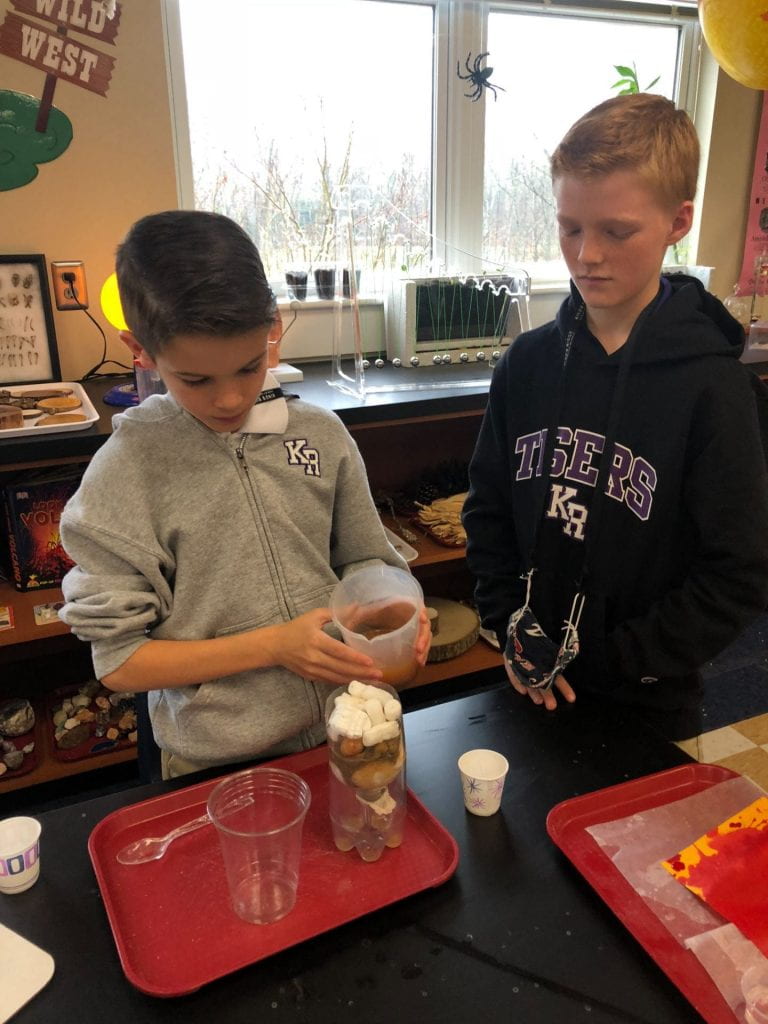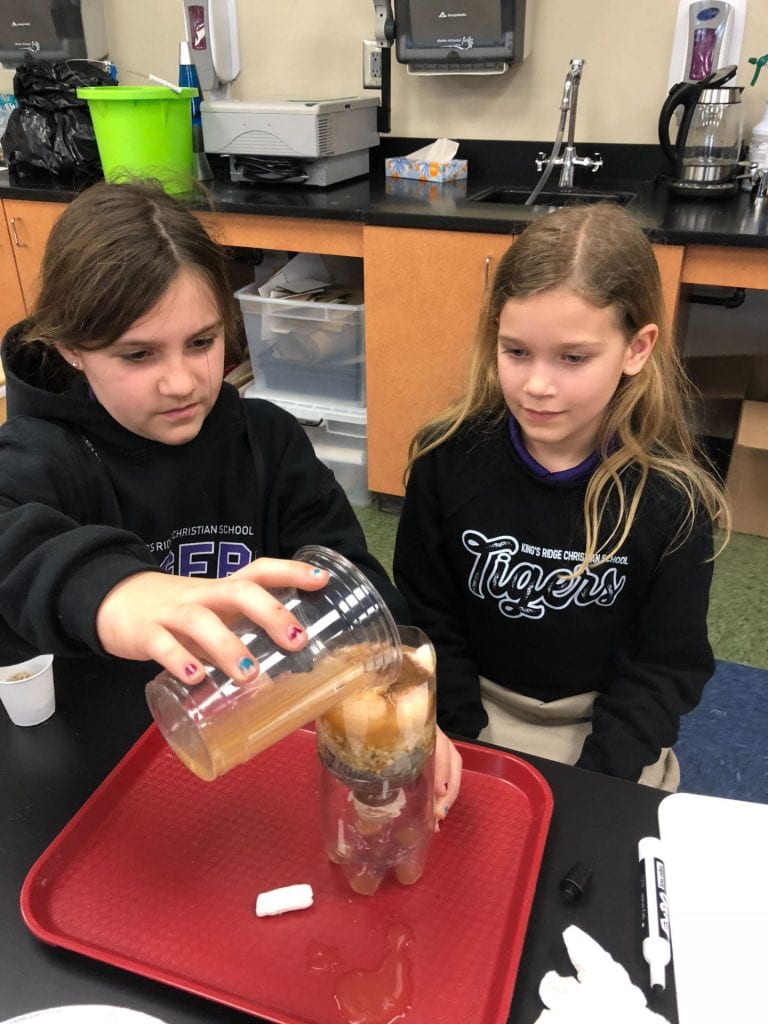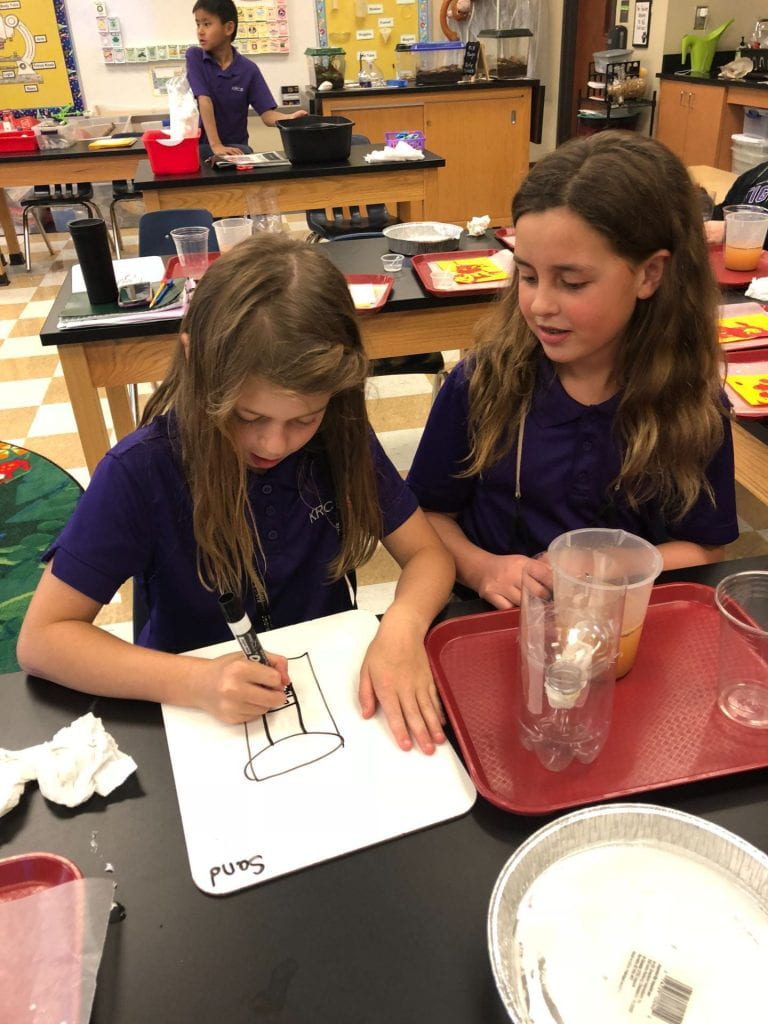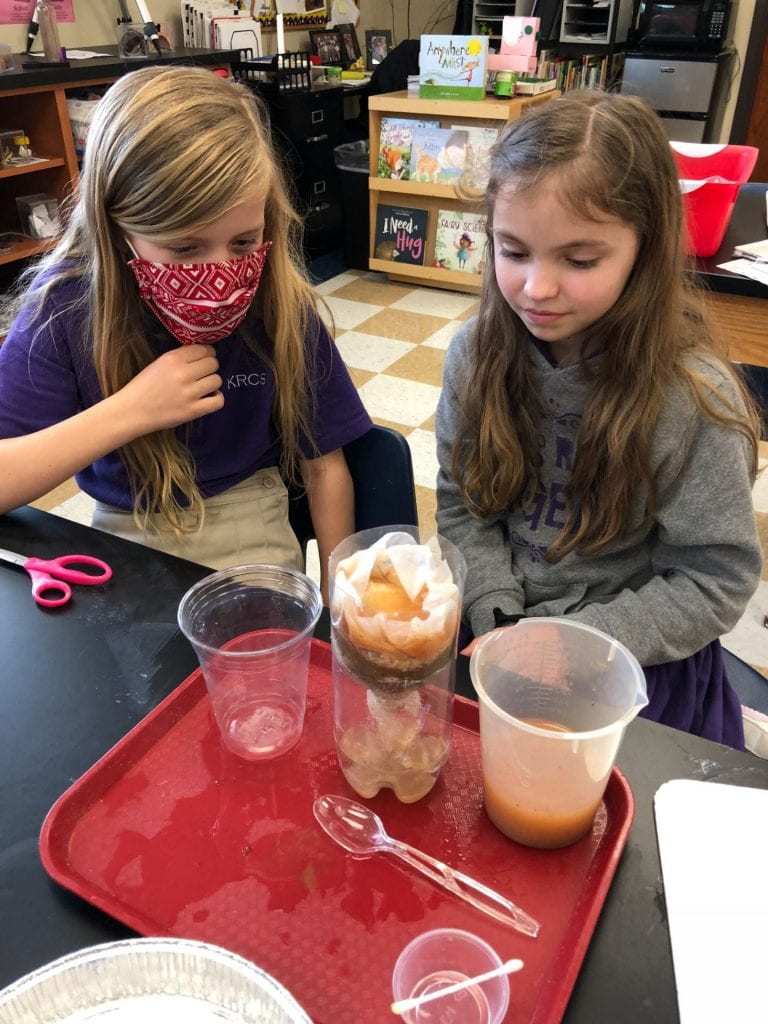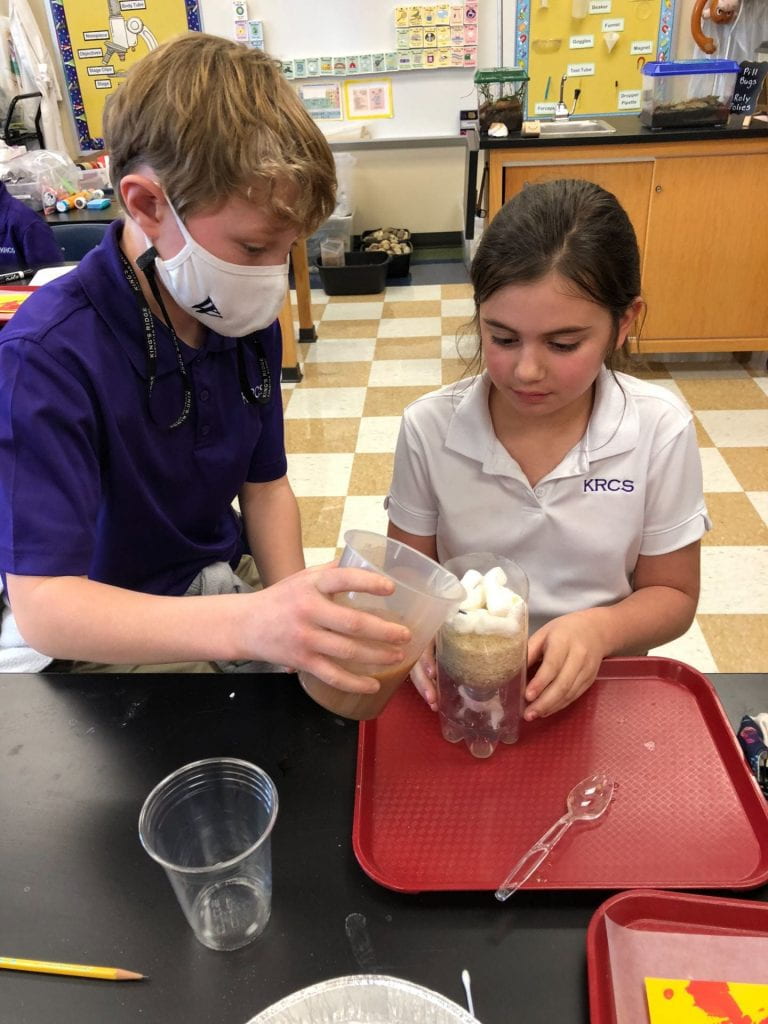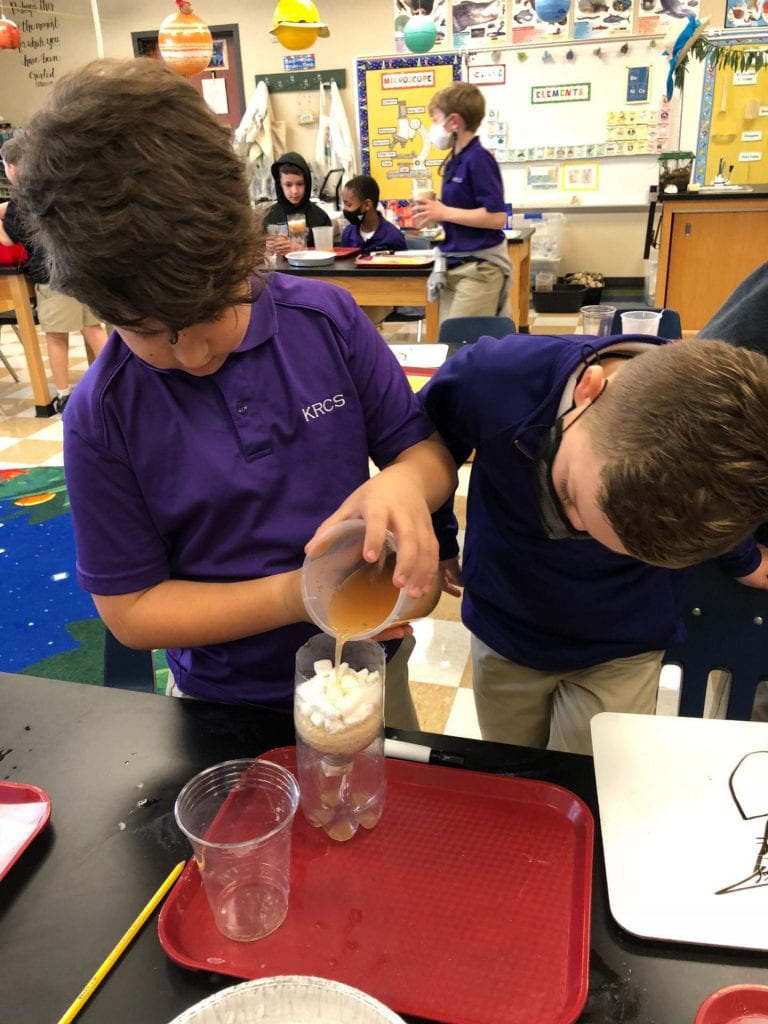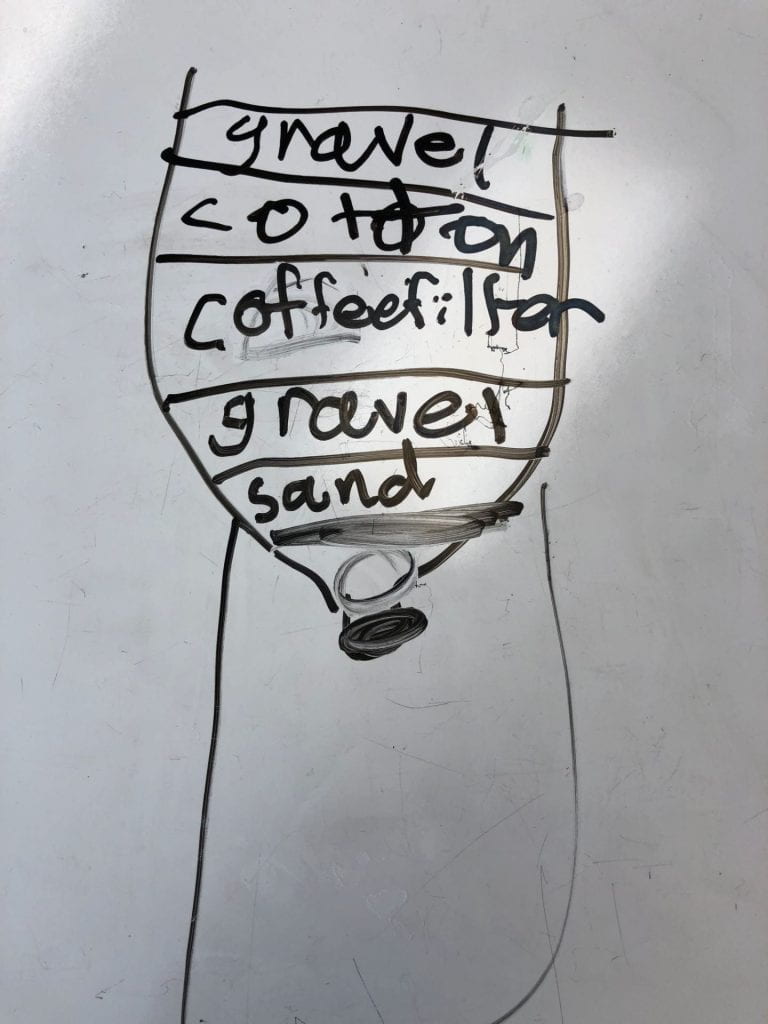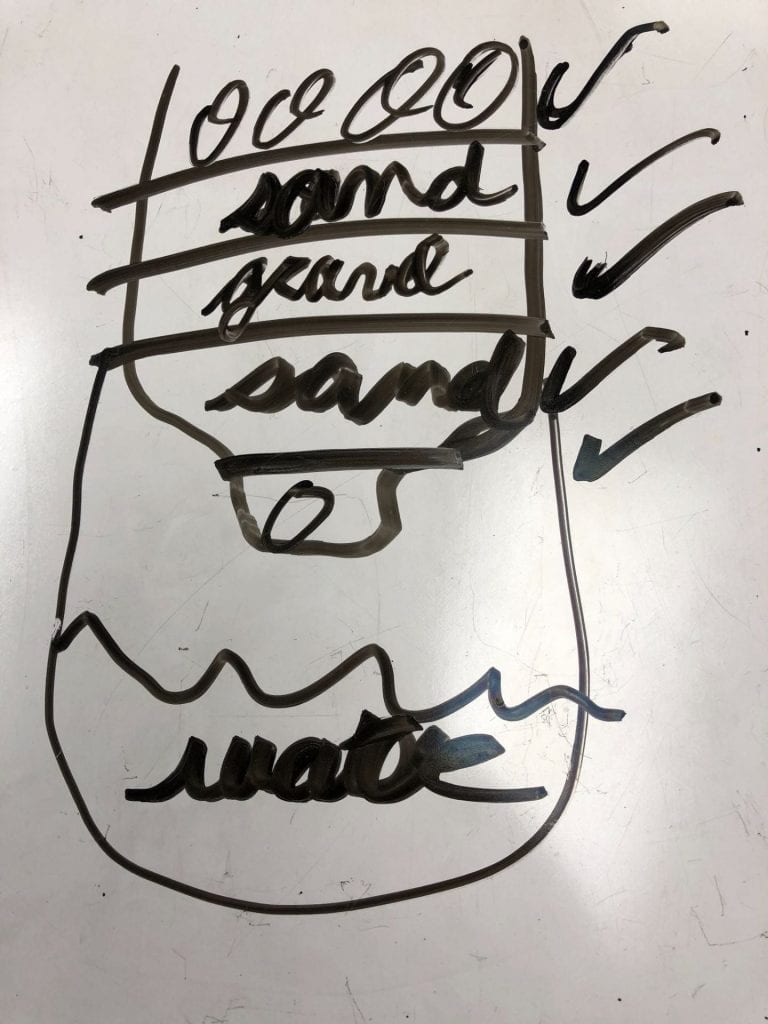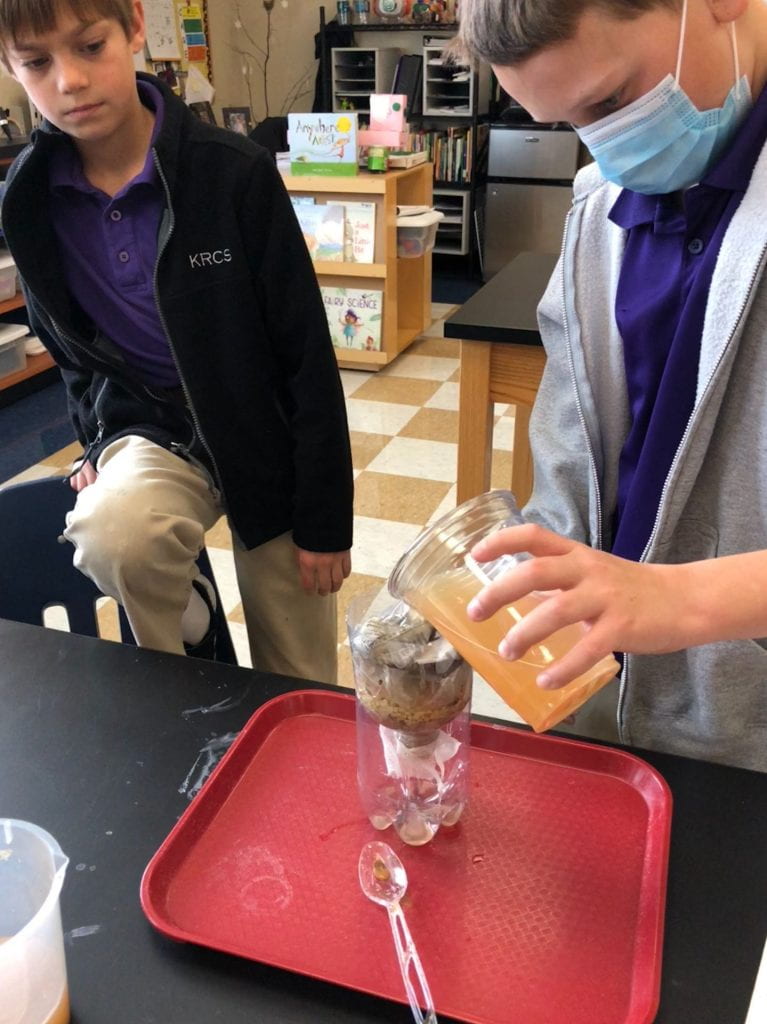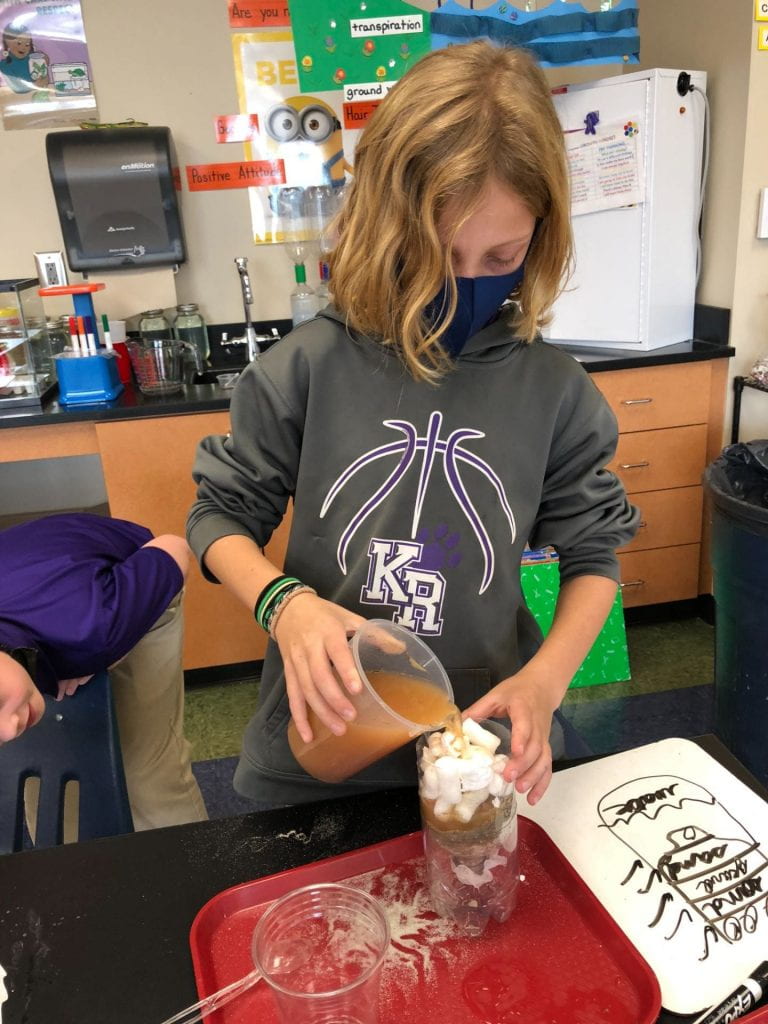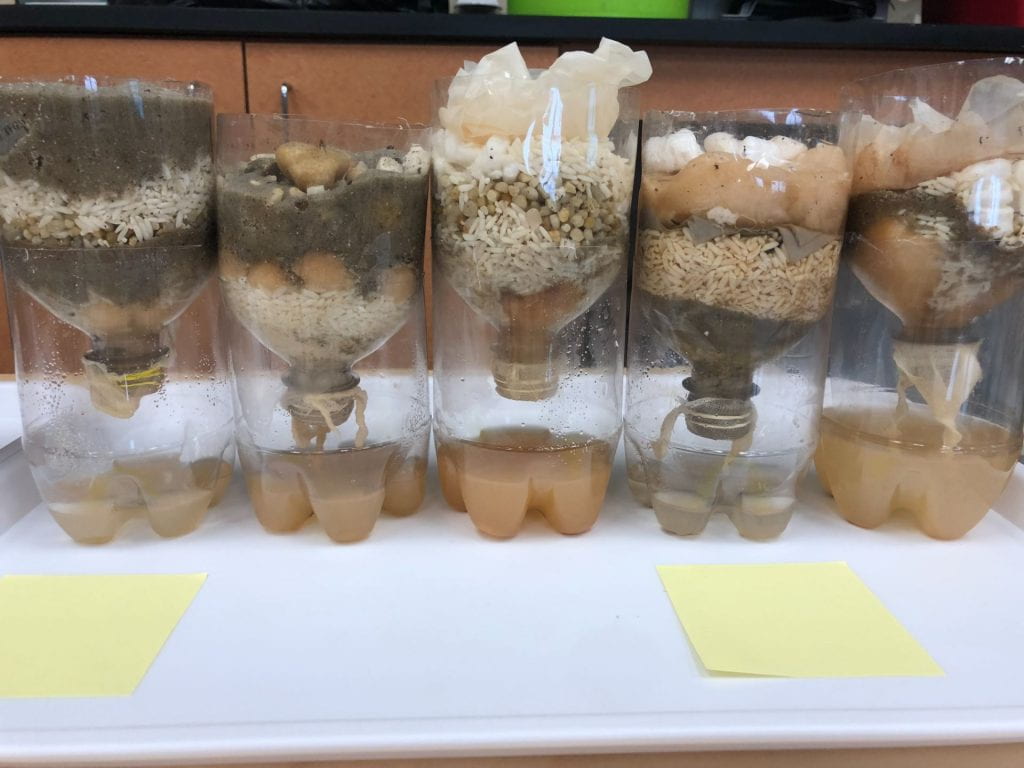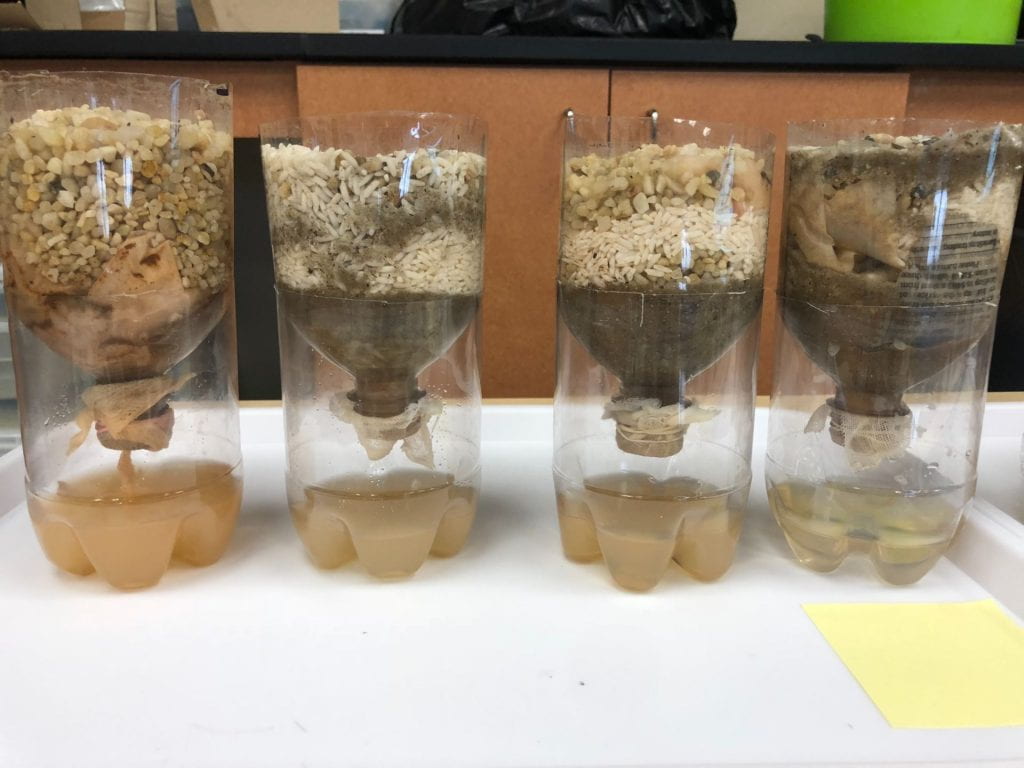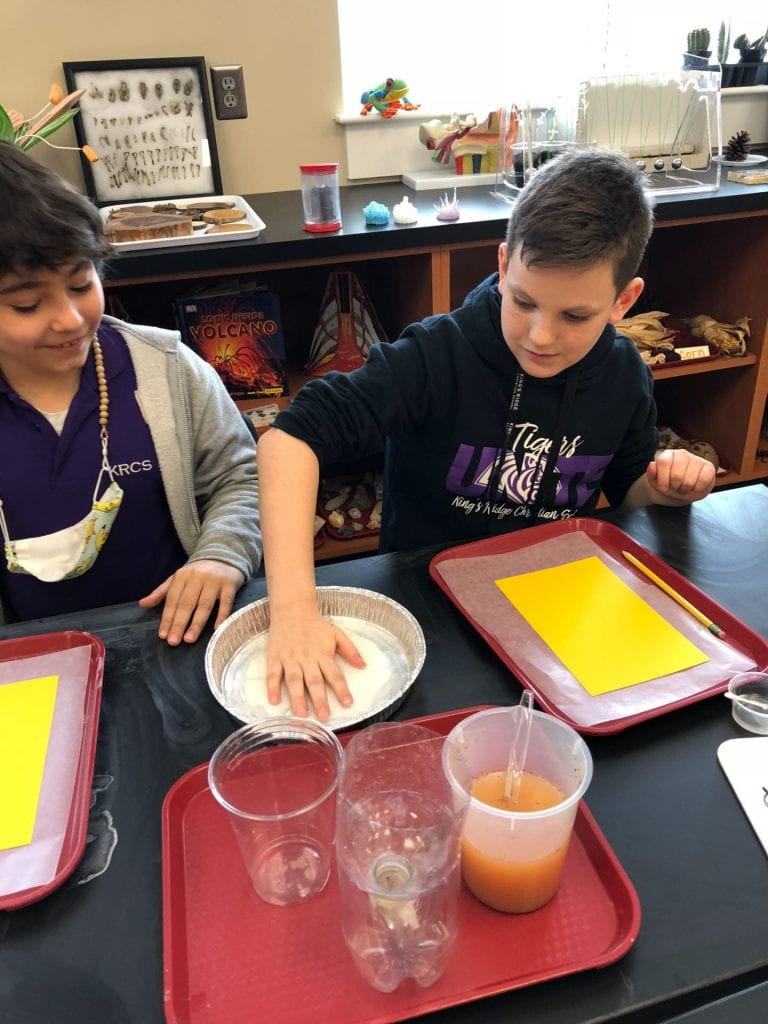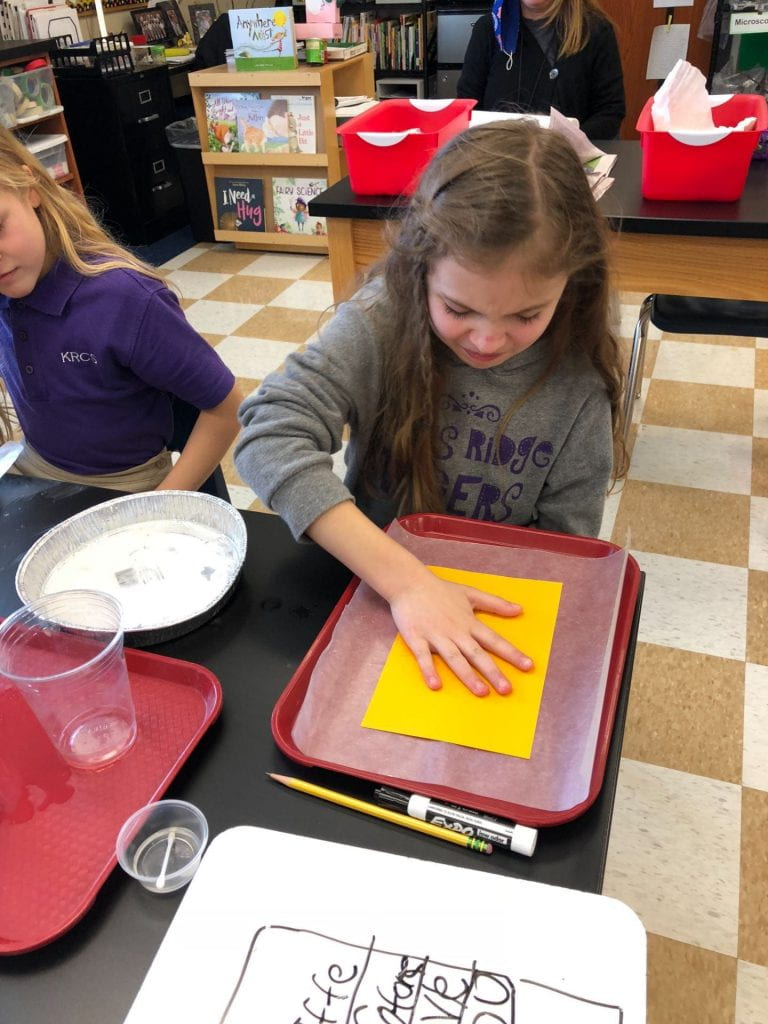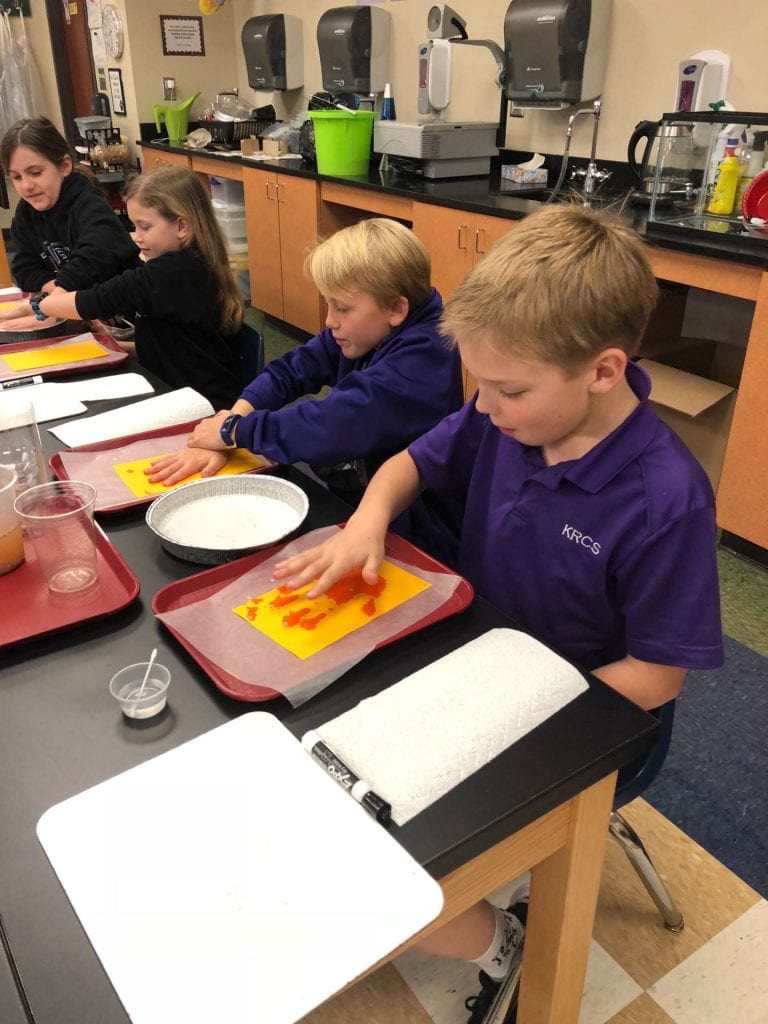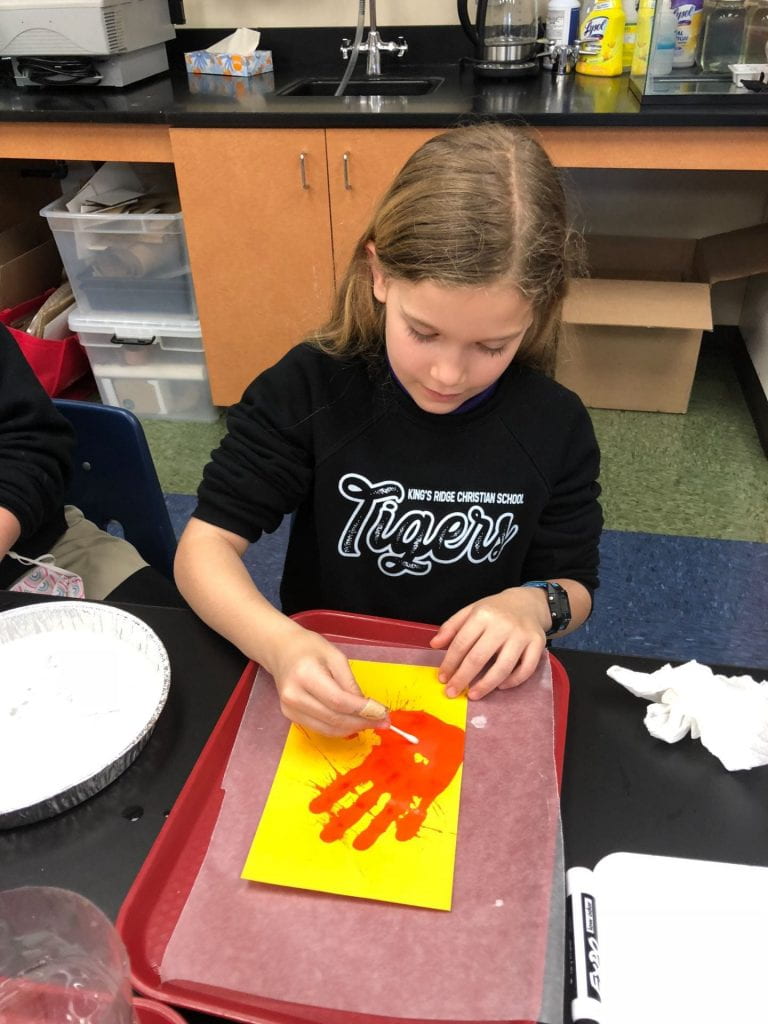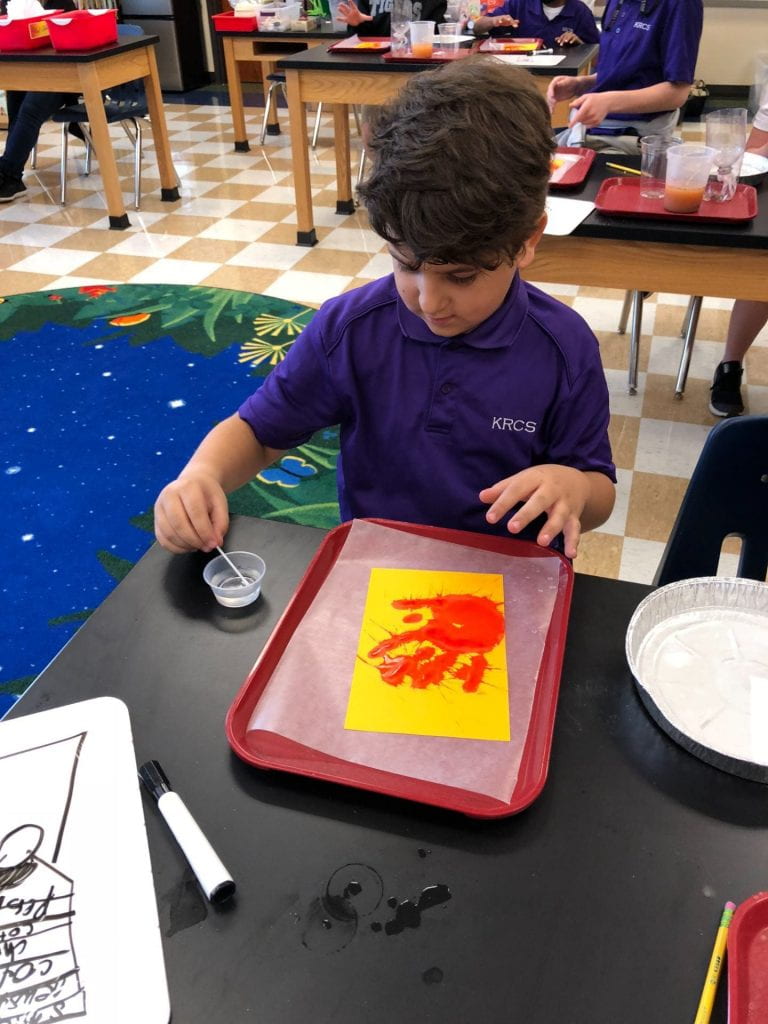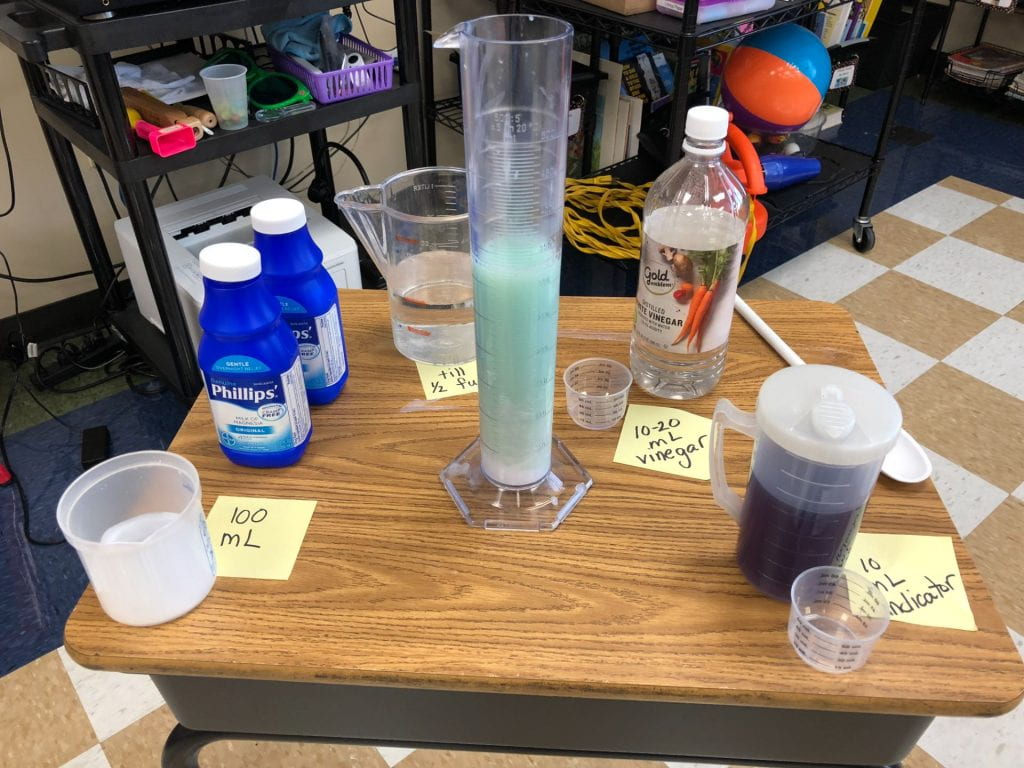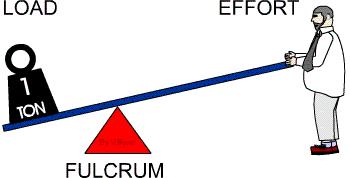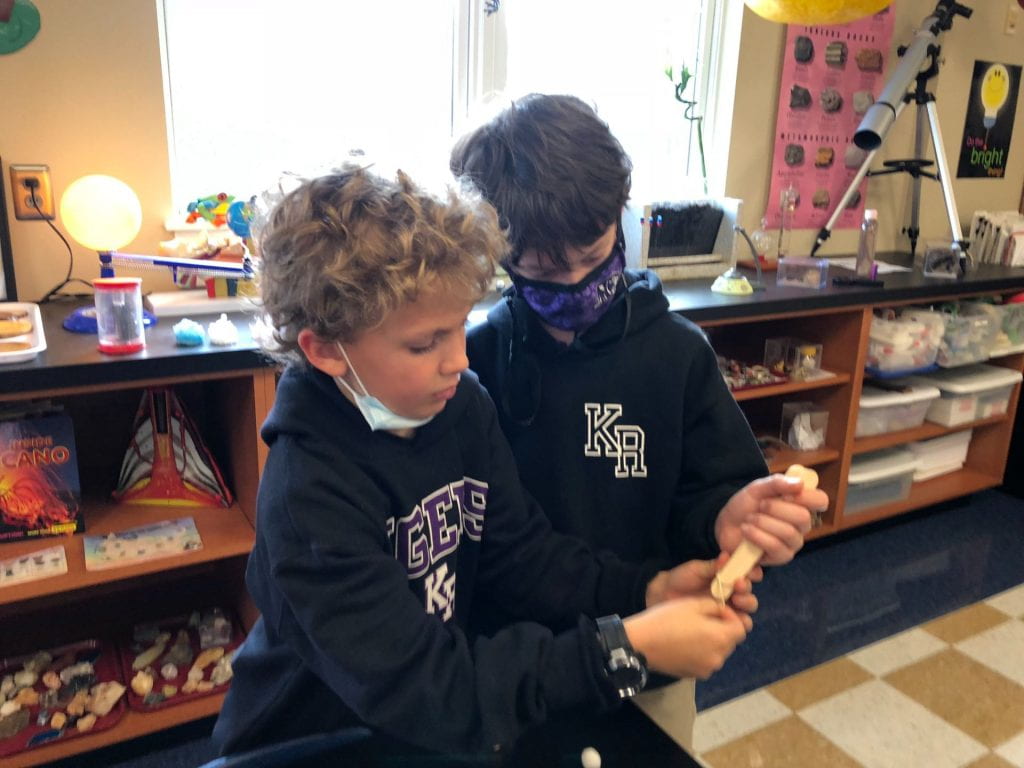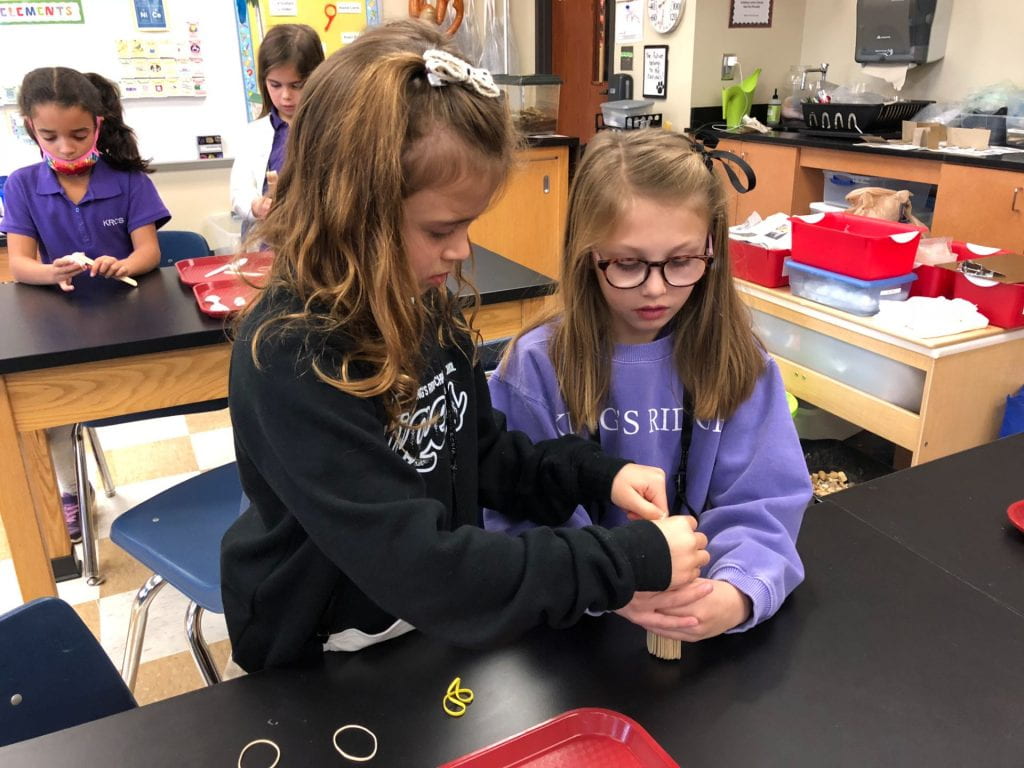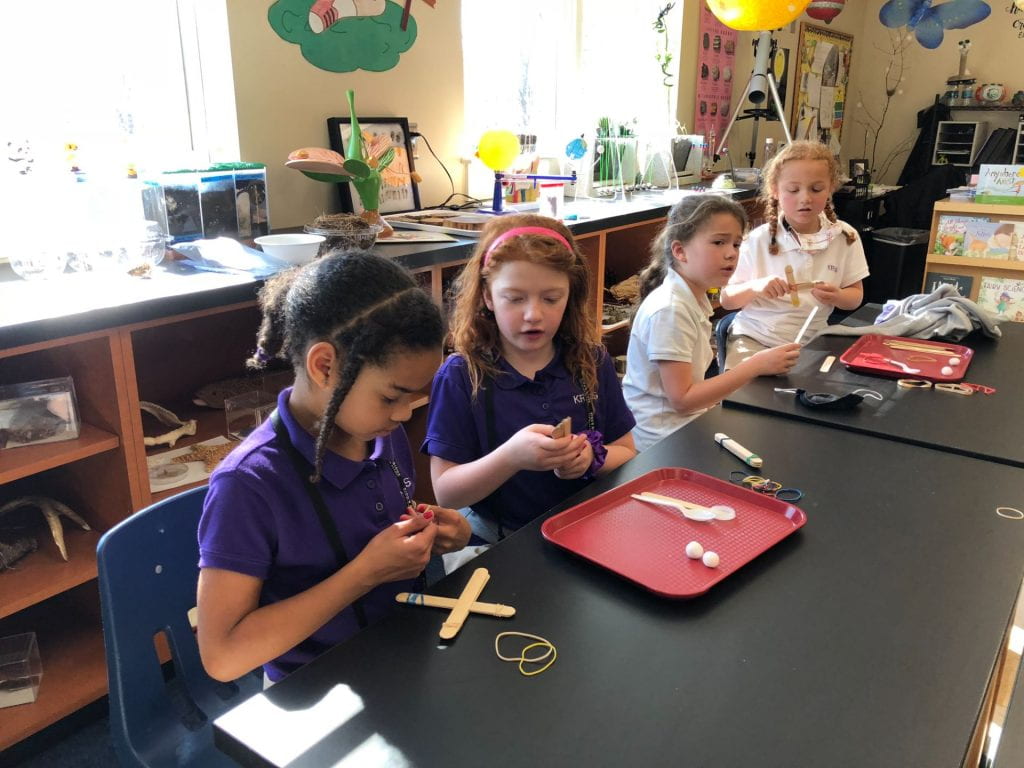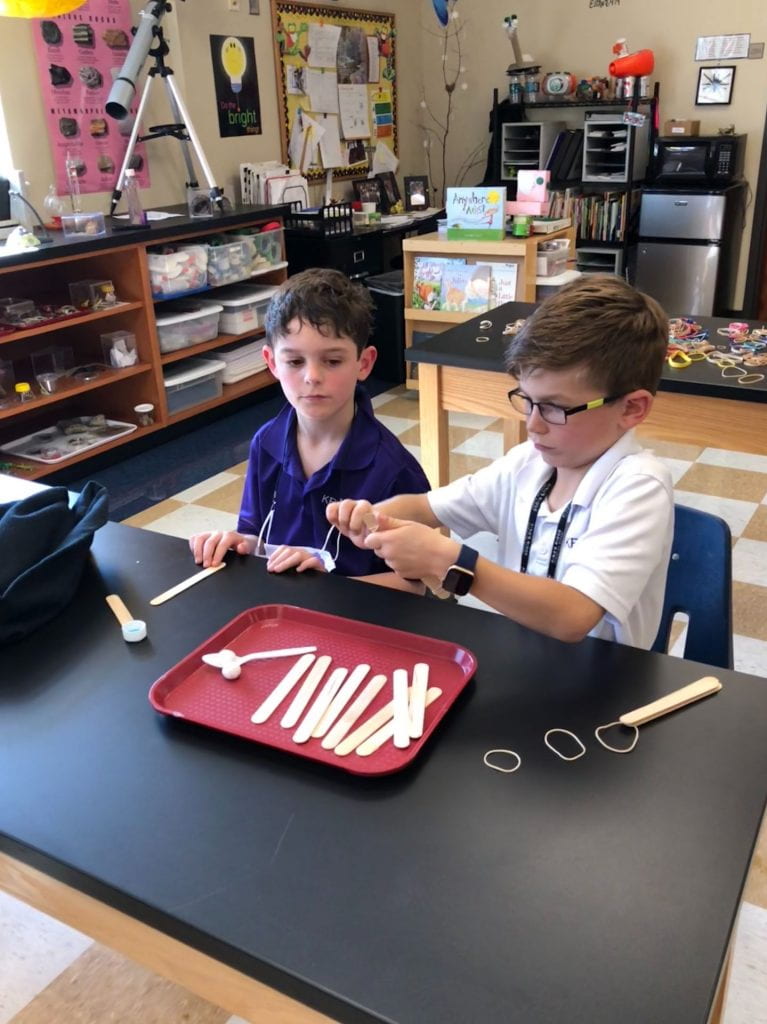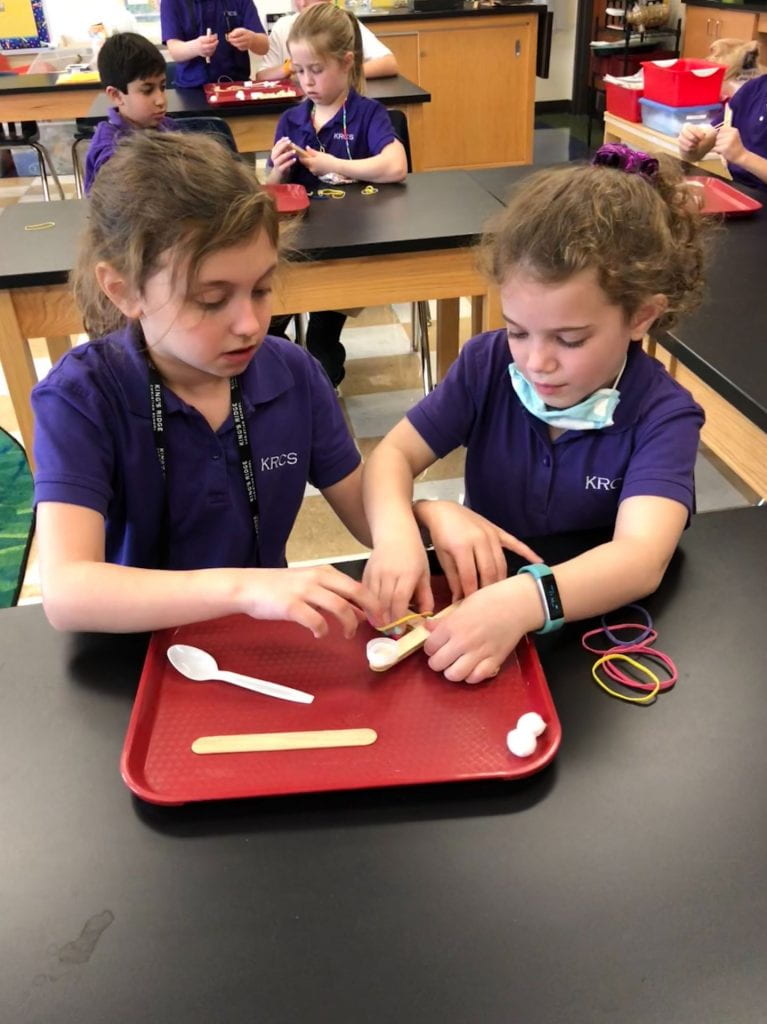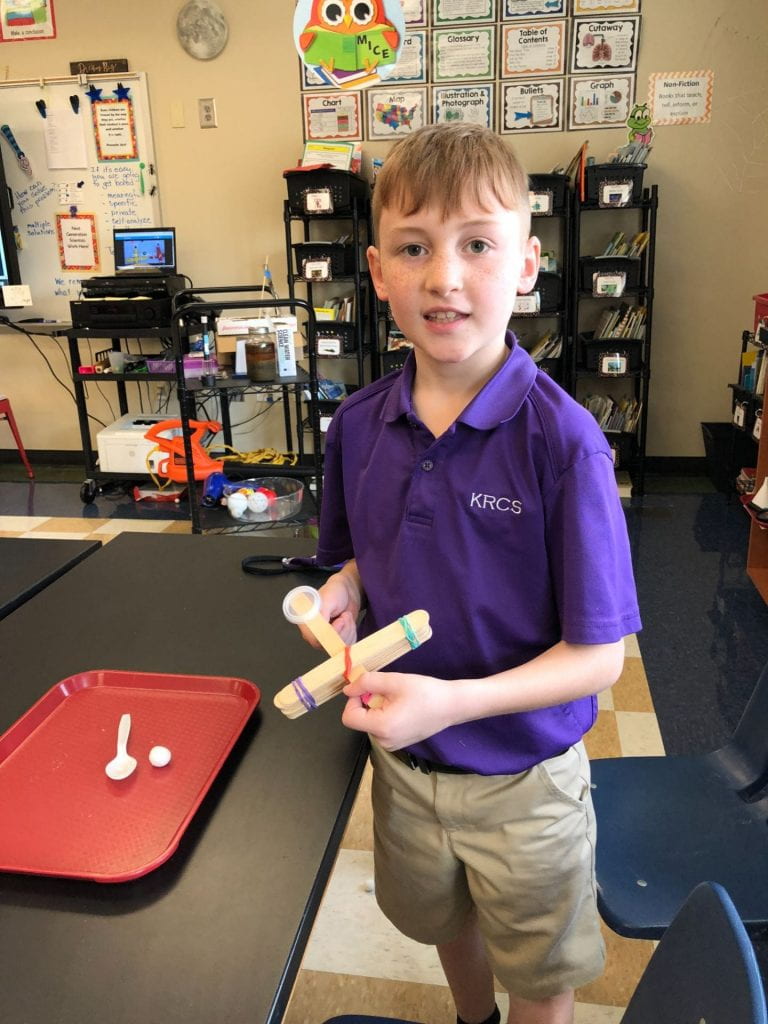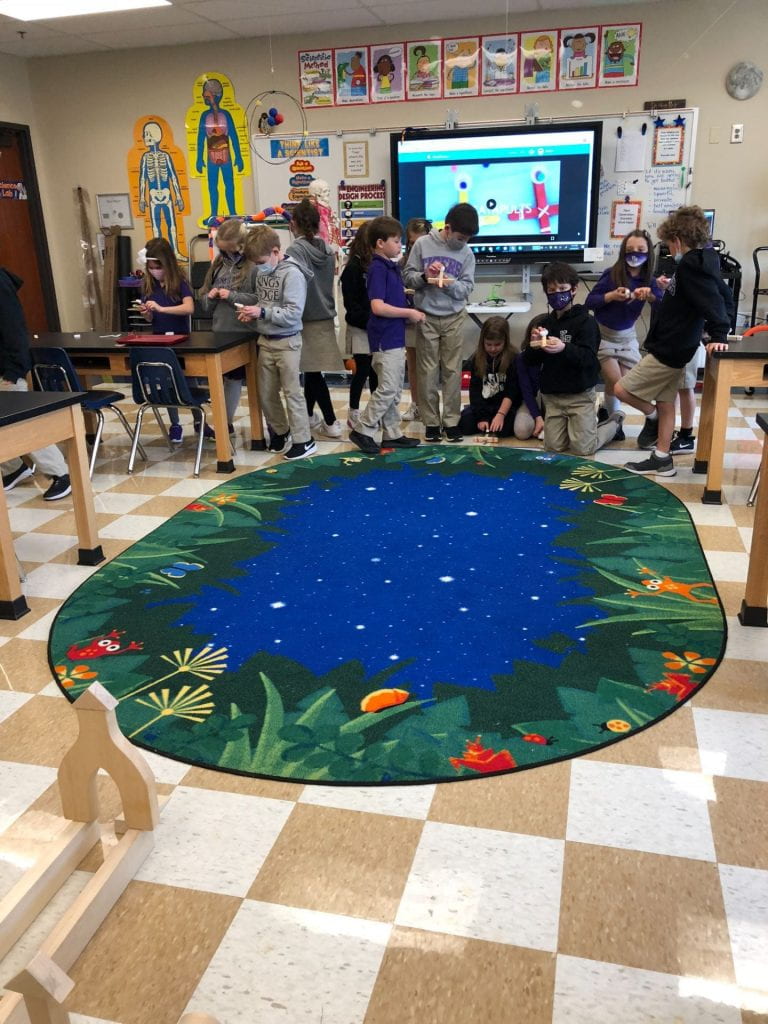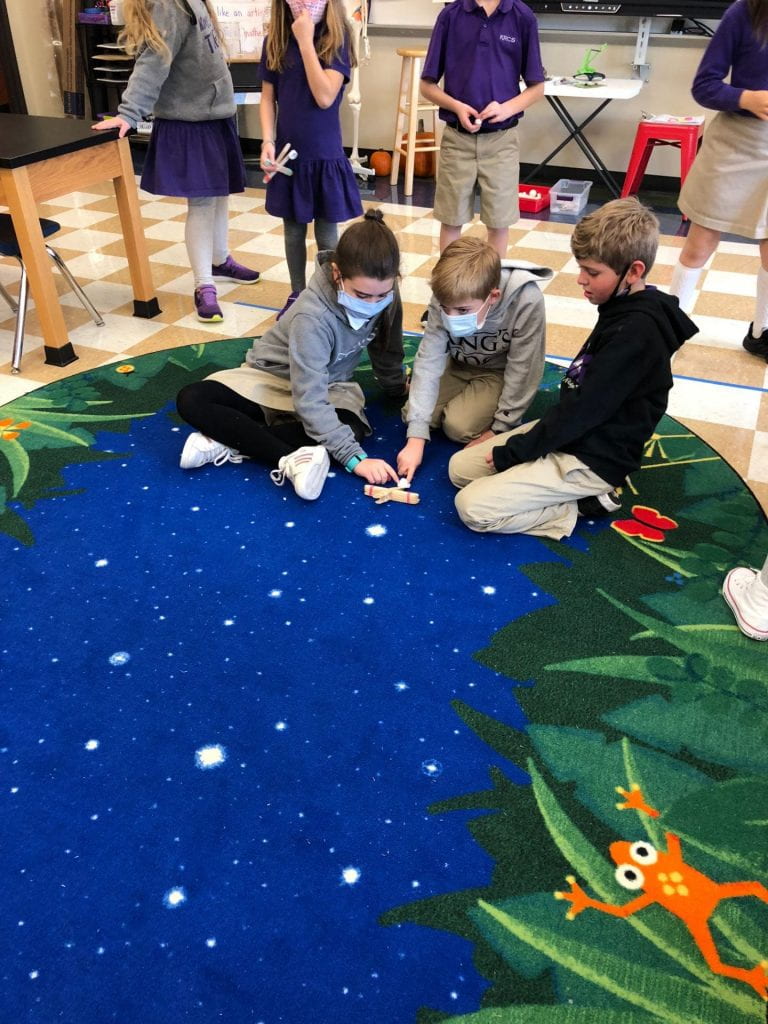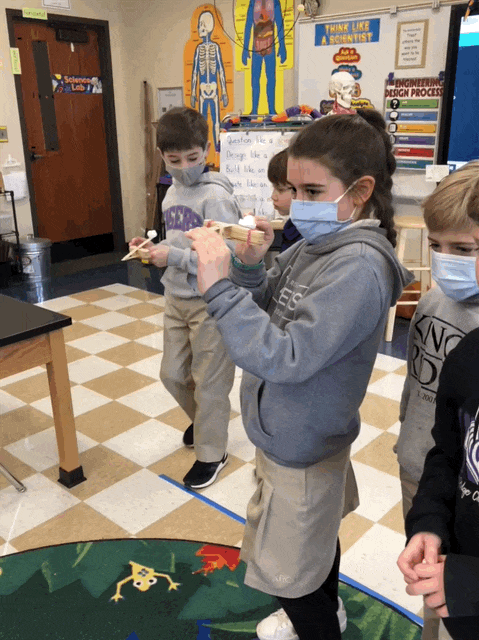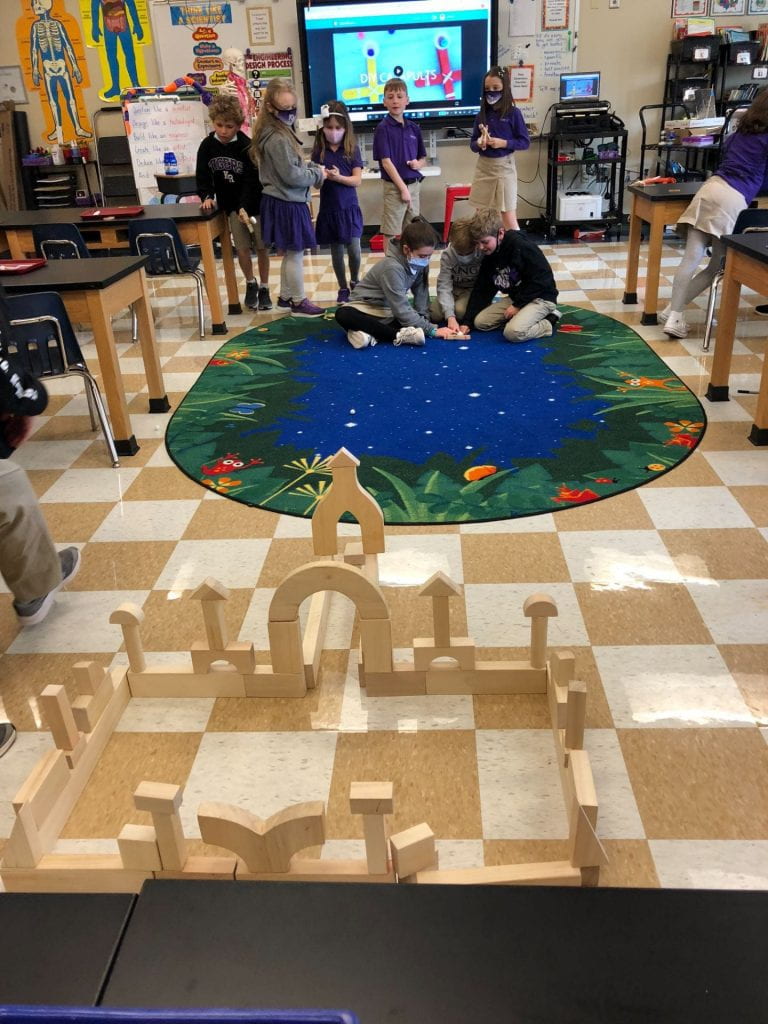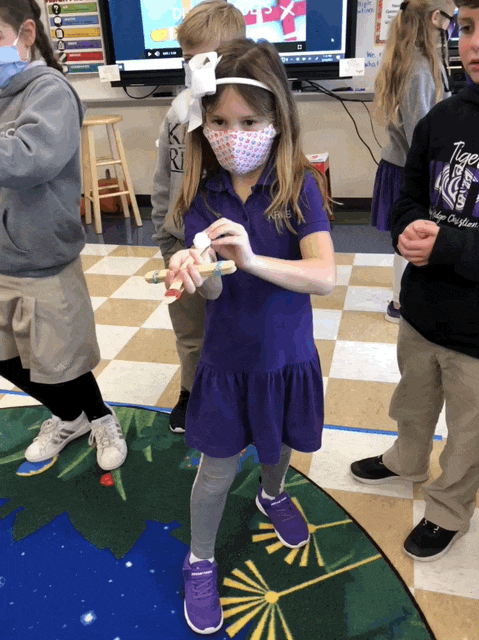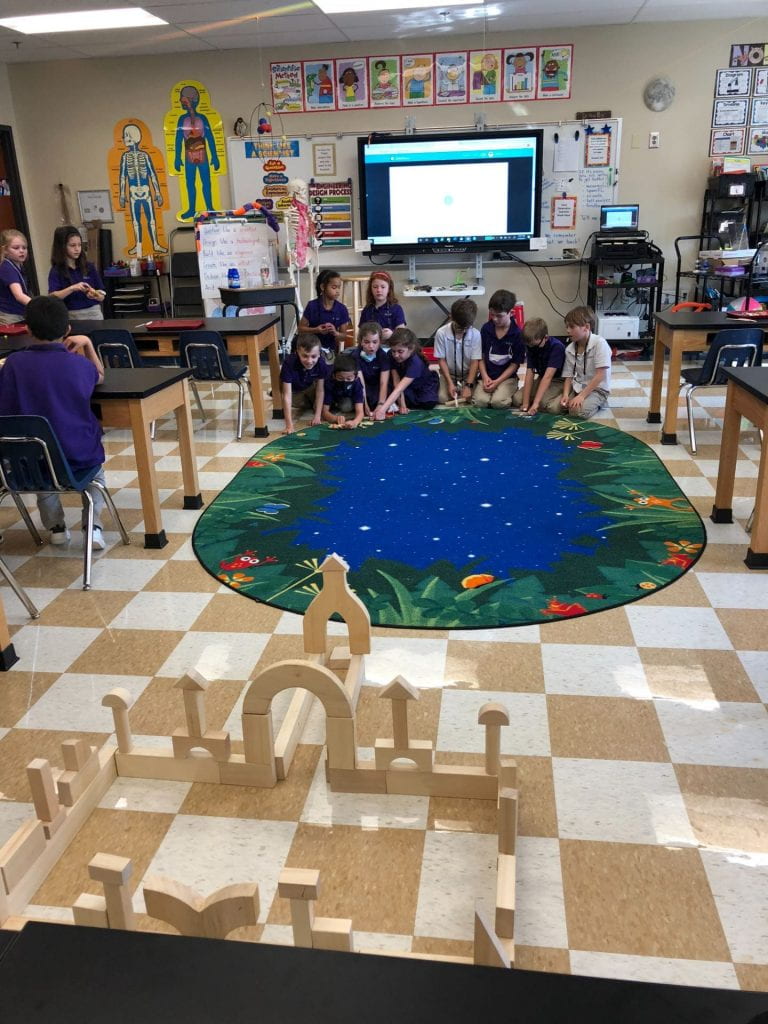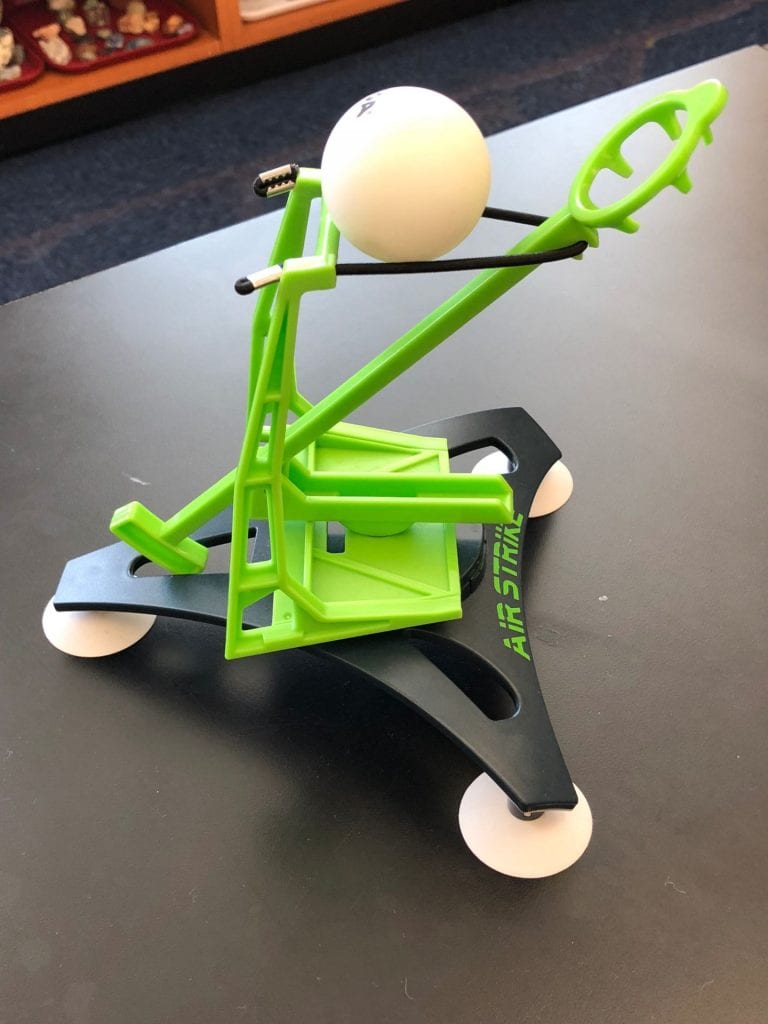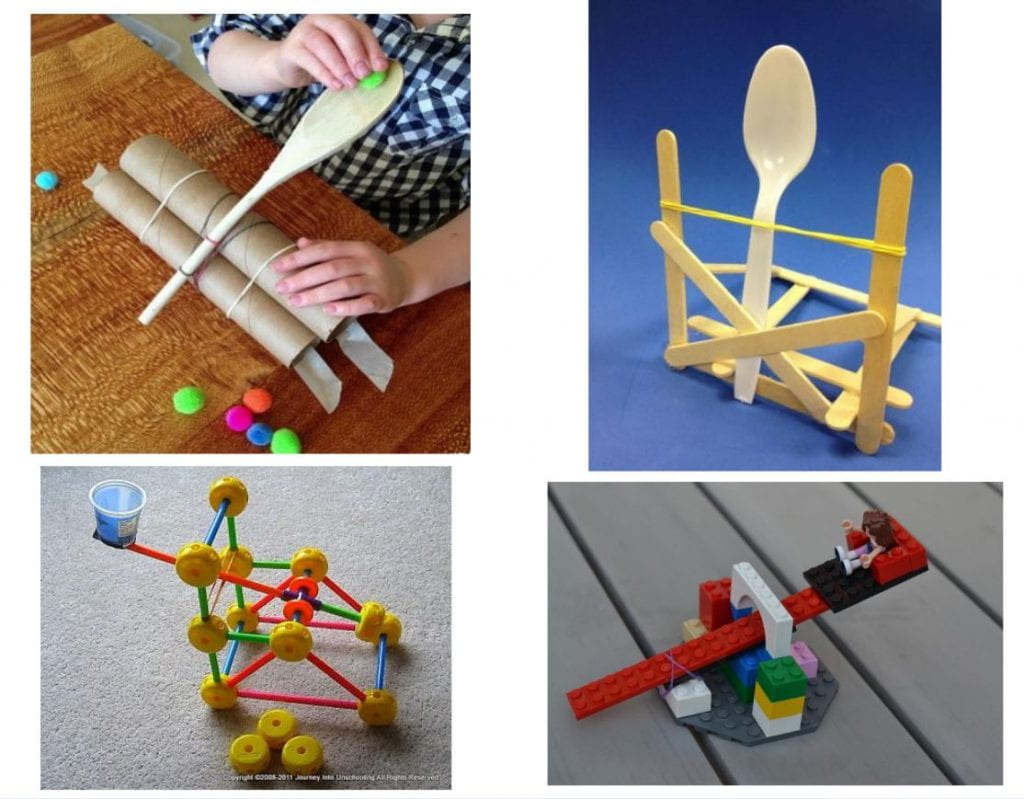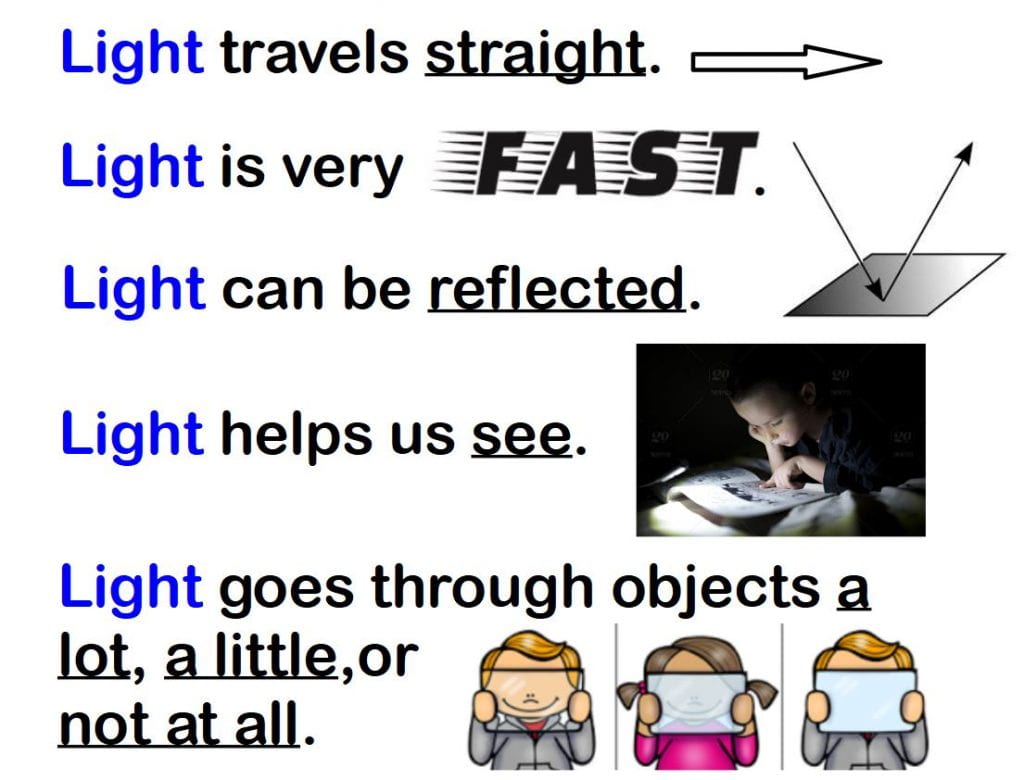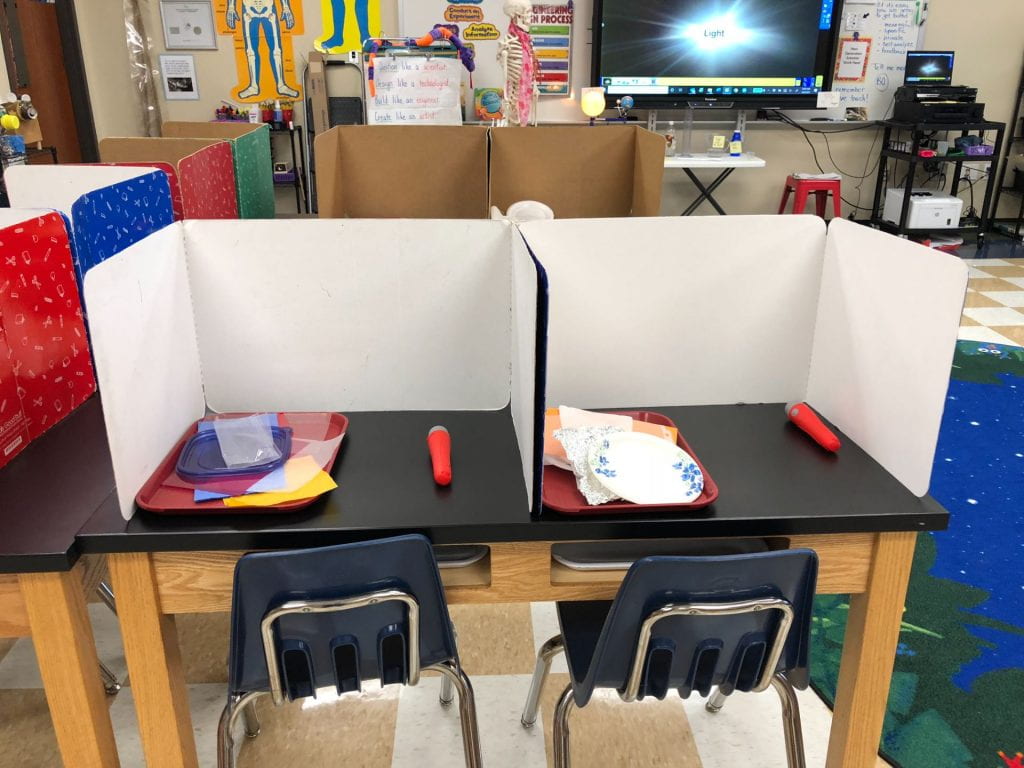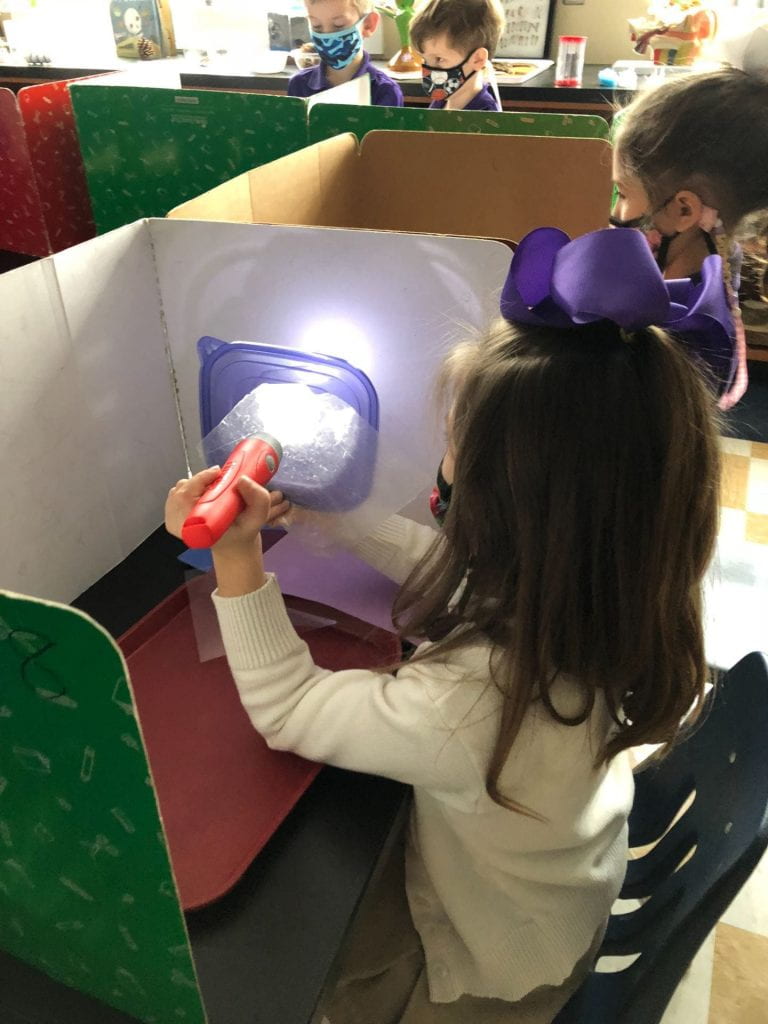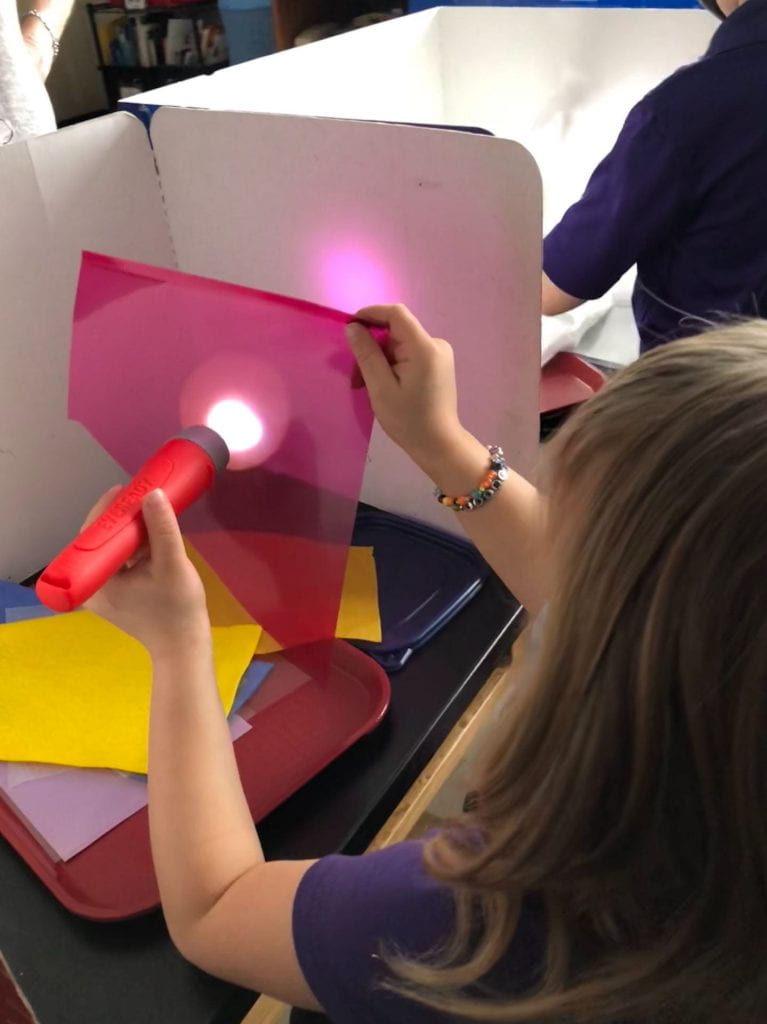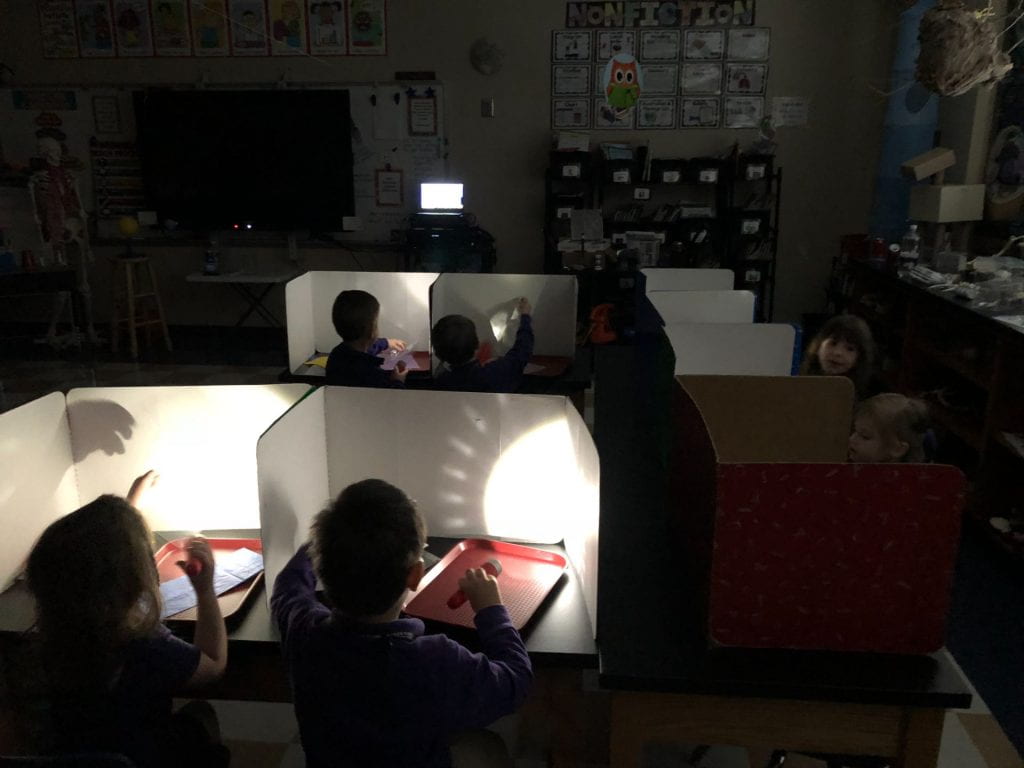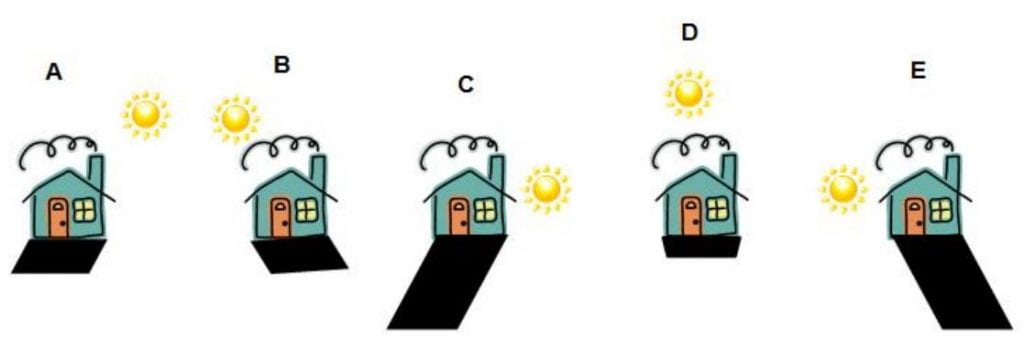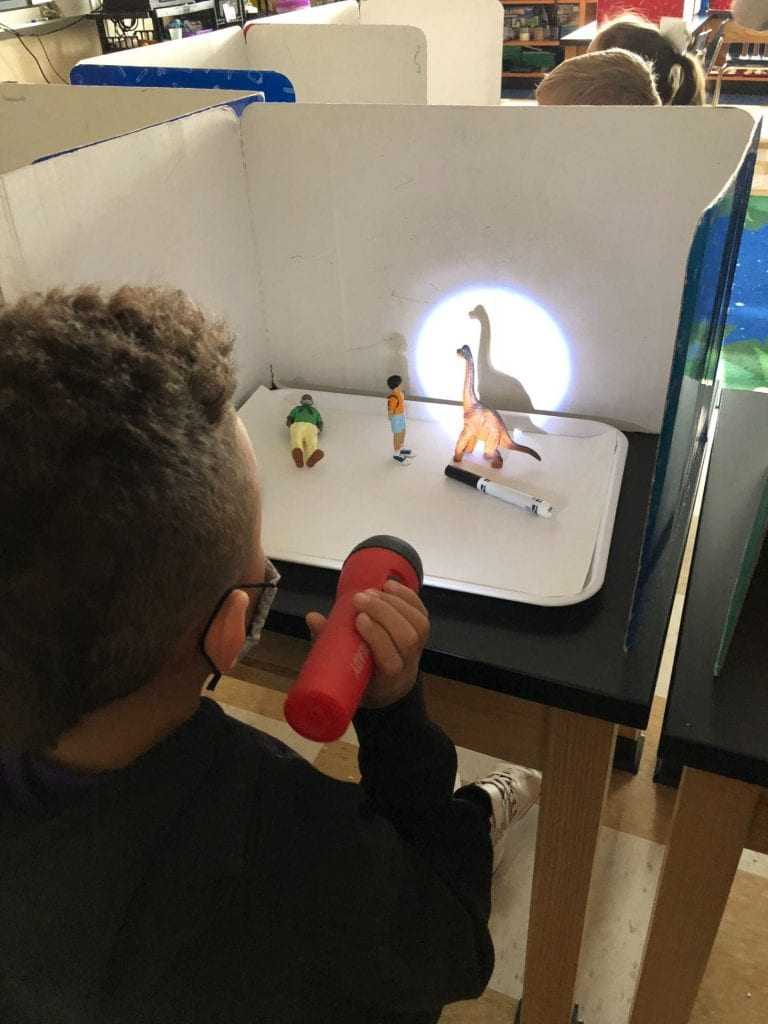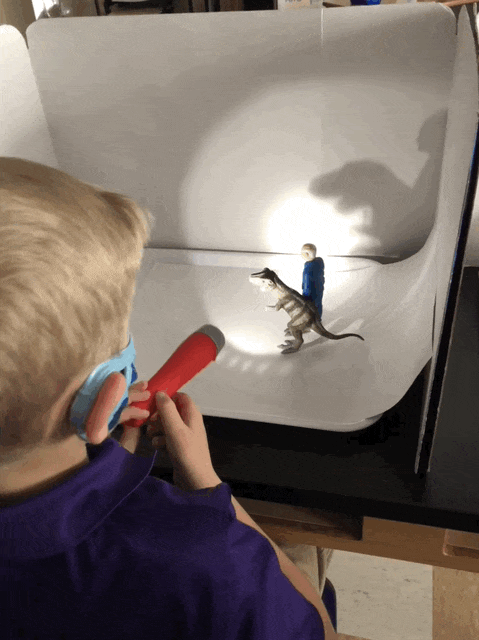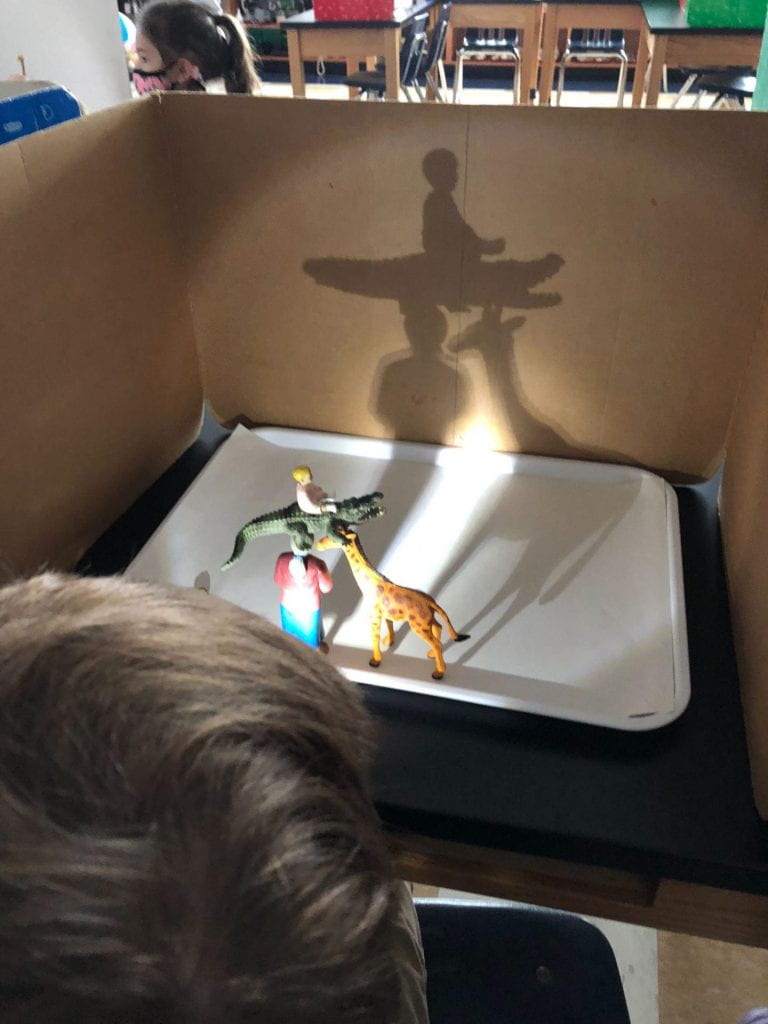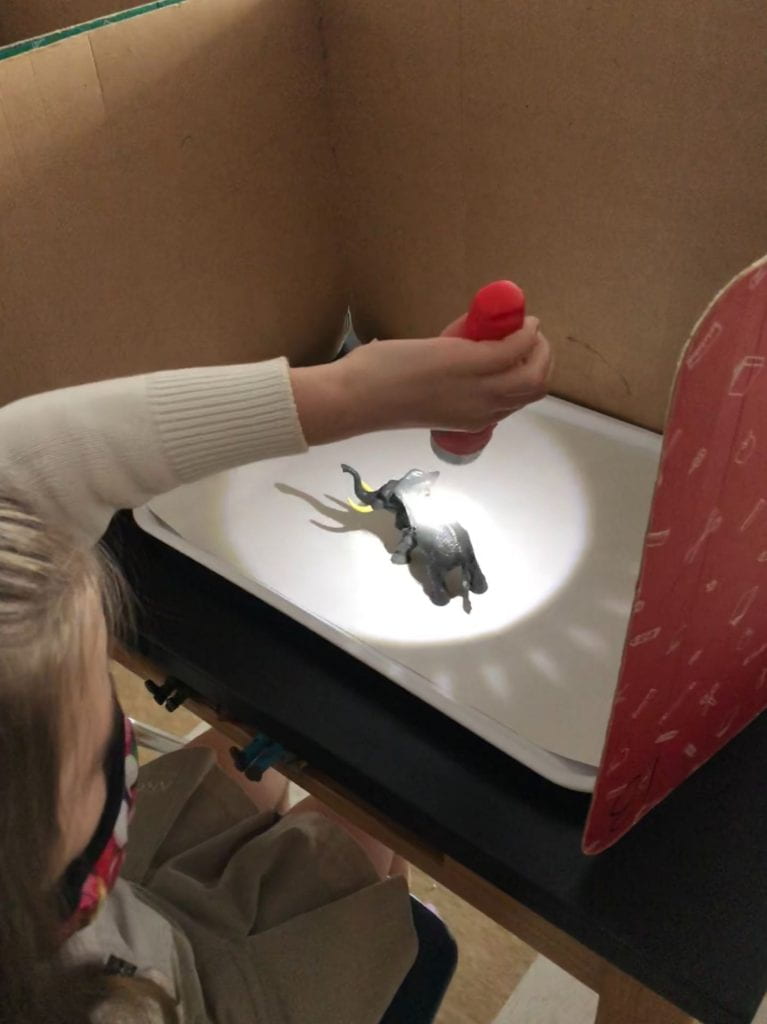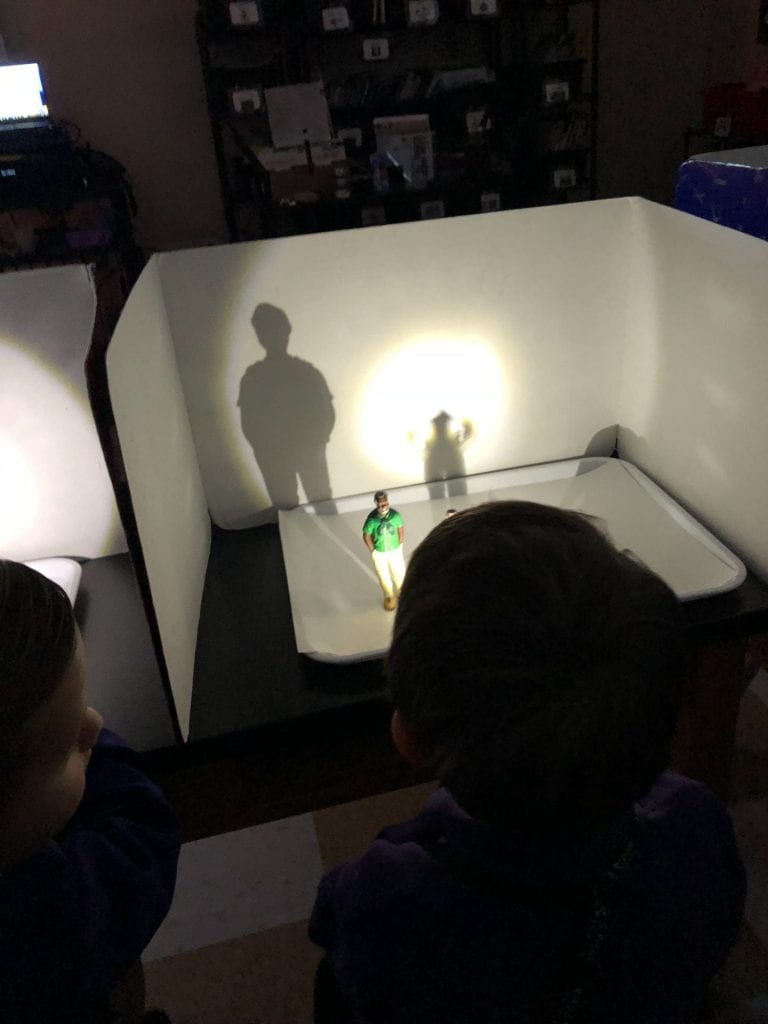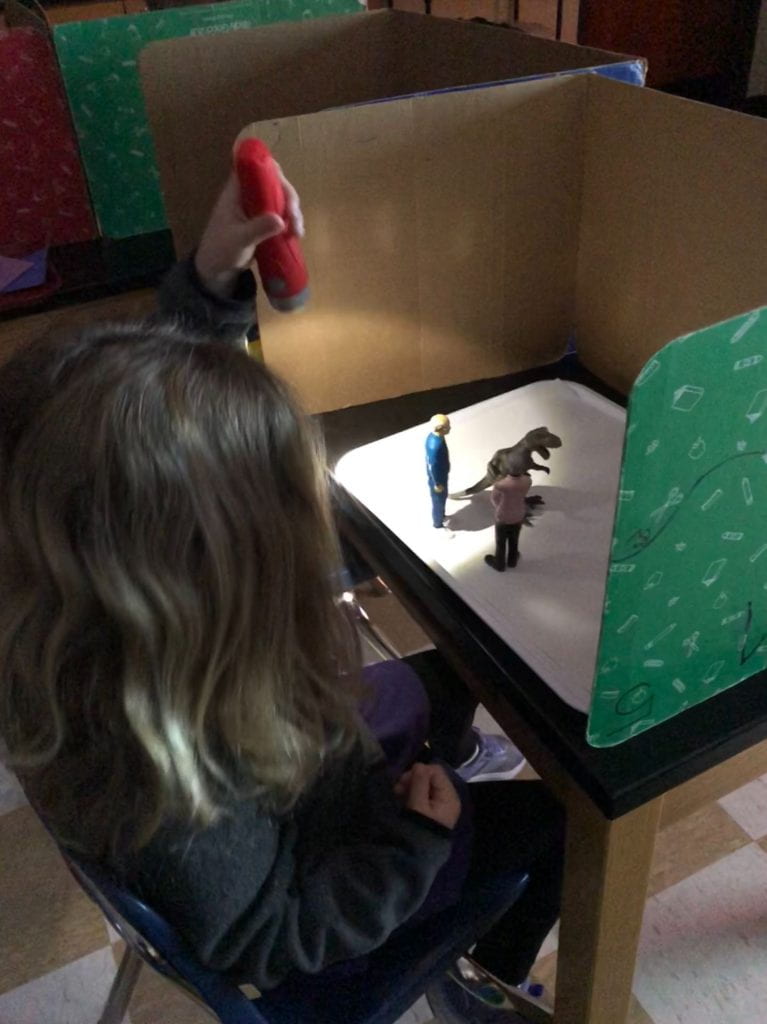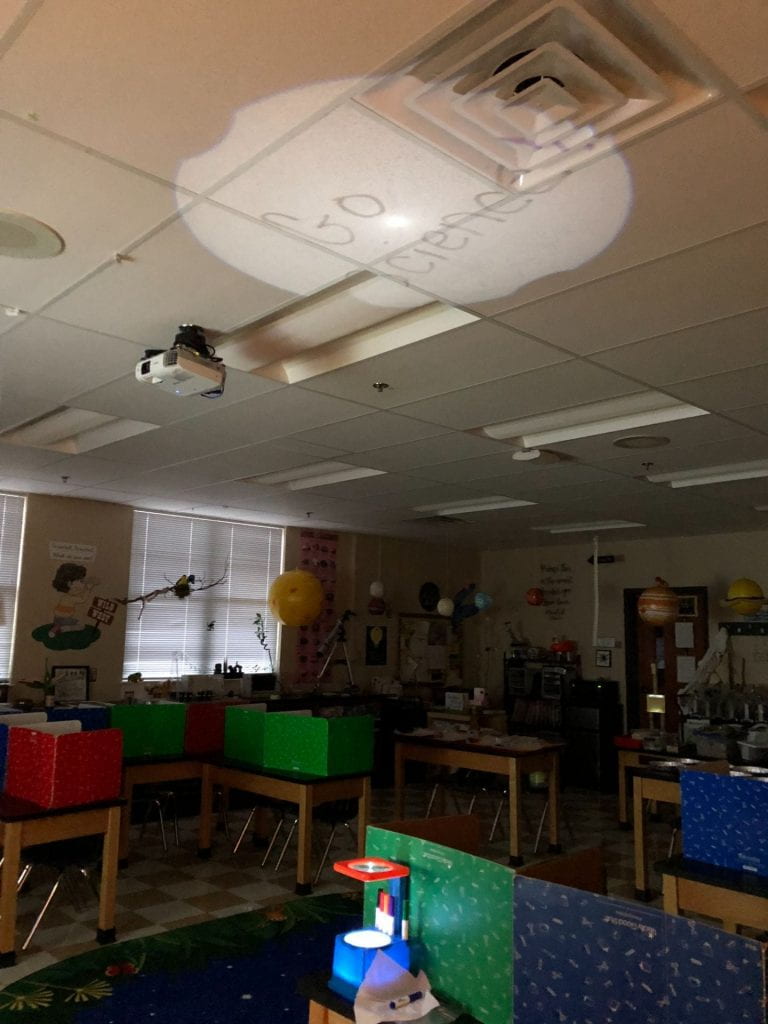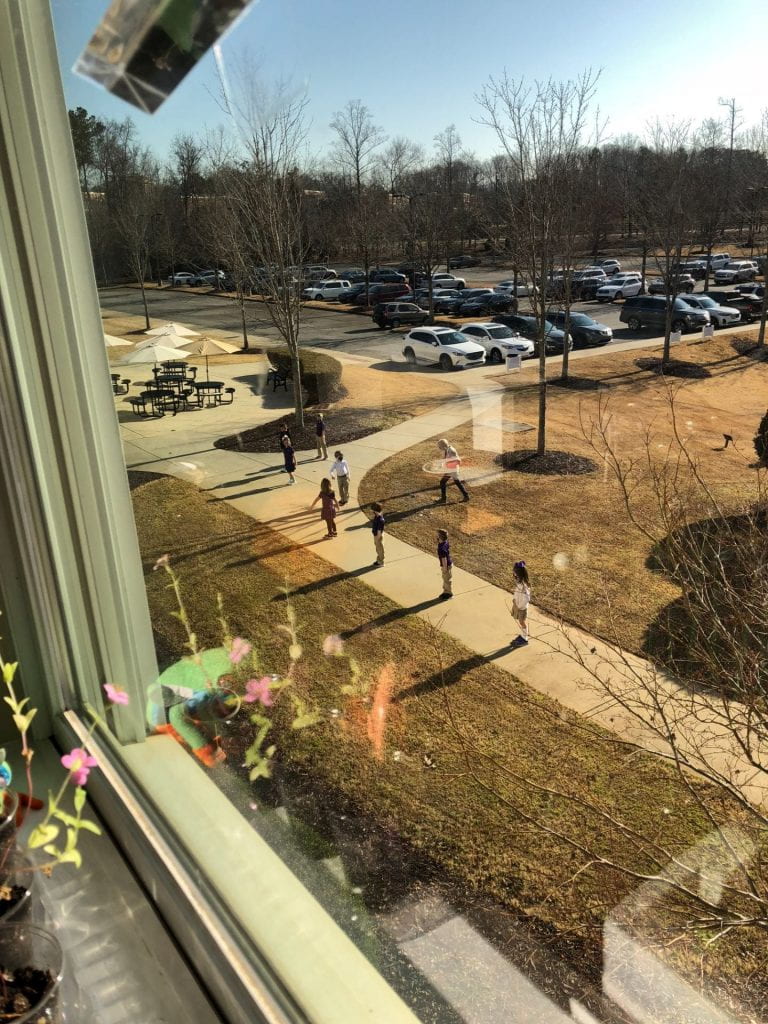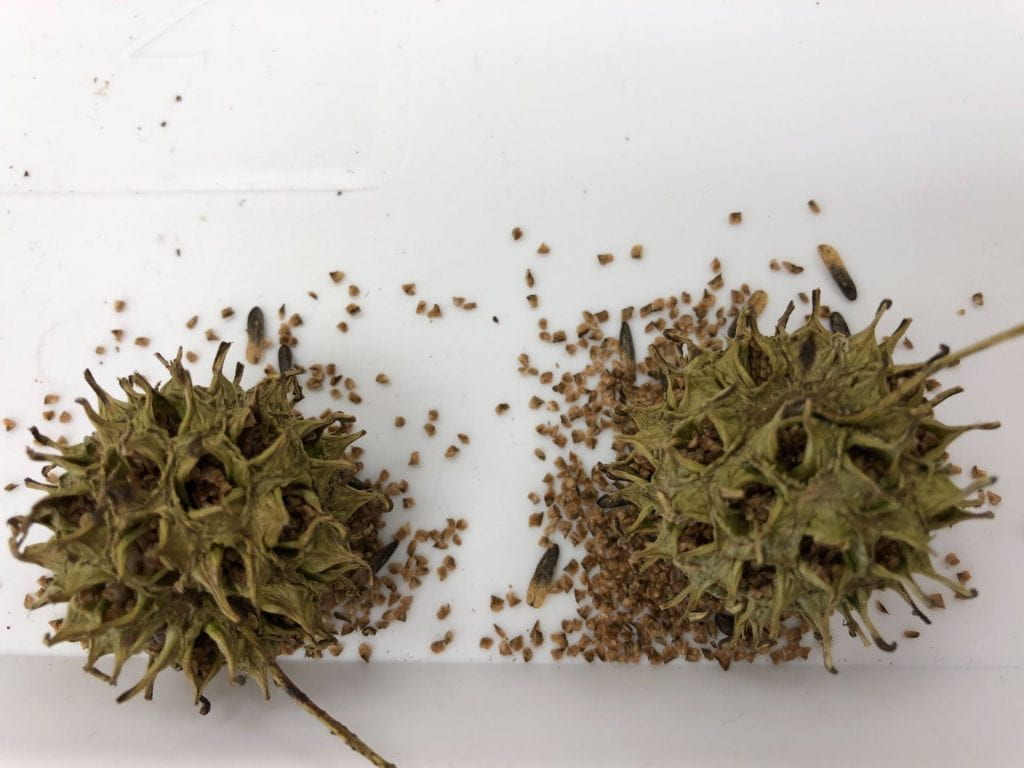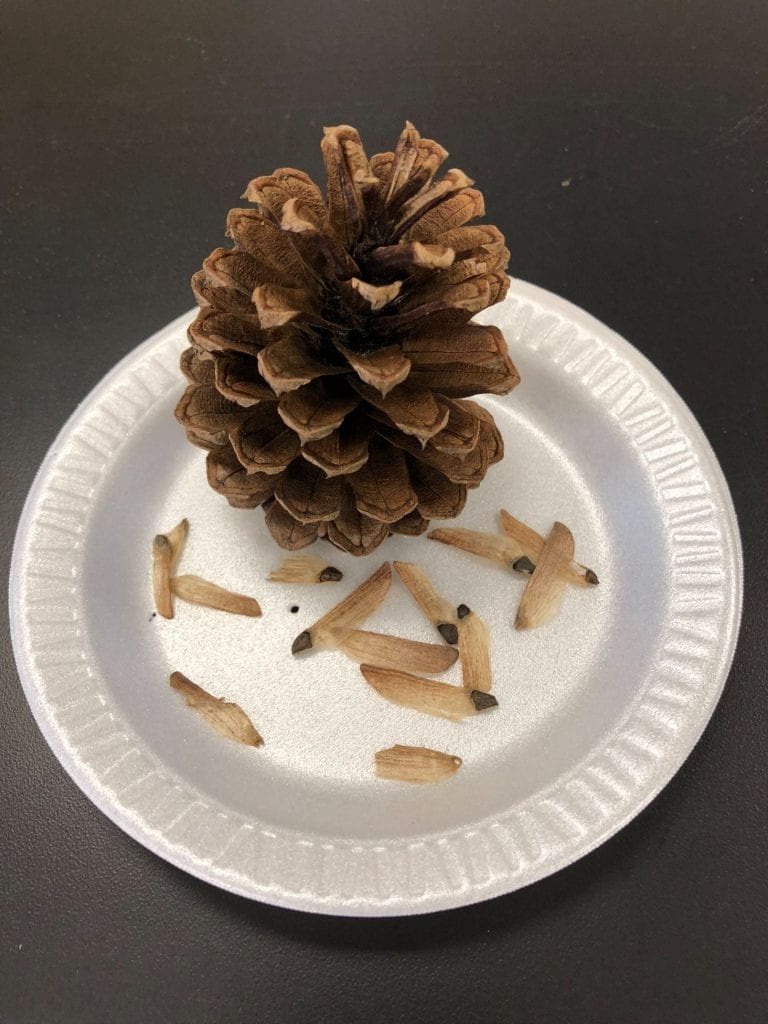Bloody Hand and Upset Stomachs
Third grade chemists continued their study of acids and bases. We soaked our hands in a solution of baking soda and water and placed them on goldenrod copy paper. When we lifted our hands, there were red handprints. What happened? The goldenrod paper contains a special dye that turns bright red when exposed to solutions that are basic. When we placed vinegar, an acid, on the paper with a Q-tip, the paper turned back to yellow. When something doesn’t make sense, find the science!
We discovered how an antacid works in the investigation below. Click here to learn more.
Catapults
Second grade scientists study force and motion and simple machines. We learned the history of catapults and the difference between potential and kinetic energy before we constructed a simple catapult. A catapult is a lever with three parts:
Click here for directions on how to make the catapults we made in lab. Although we followed this model, my engineers still had several design choices. Will their loads (snowballs) hit the castle? If not, what changes could make the launch more successful? Twisting rubber bands around the sticks was a new fine motor skill for many of my engineers.
I shared many other ways to build catapults. I challenged these engineers to construct a catapult, using a new design, at home. Click here to watch a middle school catapult competition. Does anyone want to construct one of these?
More Light and Shadows
PreFirst and PreK scientists continued their study of light and shadows. We reviewed what we’ve learned so far:
In this lab, we investigated the concept of transparent, translucent, and opaque. How much light does the material let through – a lot, a little, or none at all? We tested a variety of materials.
The sun rises in the East and sets in the West. How does a shadow change as the sun moves across the sky? We took a flashlight, and moved it over figurines and watched the shadows move. Of course, the sun doesn’t actually move, Earth does. It was fun watching these physicists make additional discoveries. Click here to watch a video about shadows.
How did this message appear on the ceiling? These mini overhead projectors are so much fun!
After lab, PreFirst went outside to observe their shadows. Observe your child’s shadow outside several times during a sunny day. Trace around it with chalk and notice how it changes.
Observe and Wonder
If I had my young scientists every day, I would have them practice observing and questioning which is the beginning of all great thinking. What do you see and what do you wonder? Take a minute and look at this photo. As you view the picture, what questions come to mind? Then look below at what your children noticed.
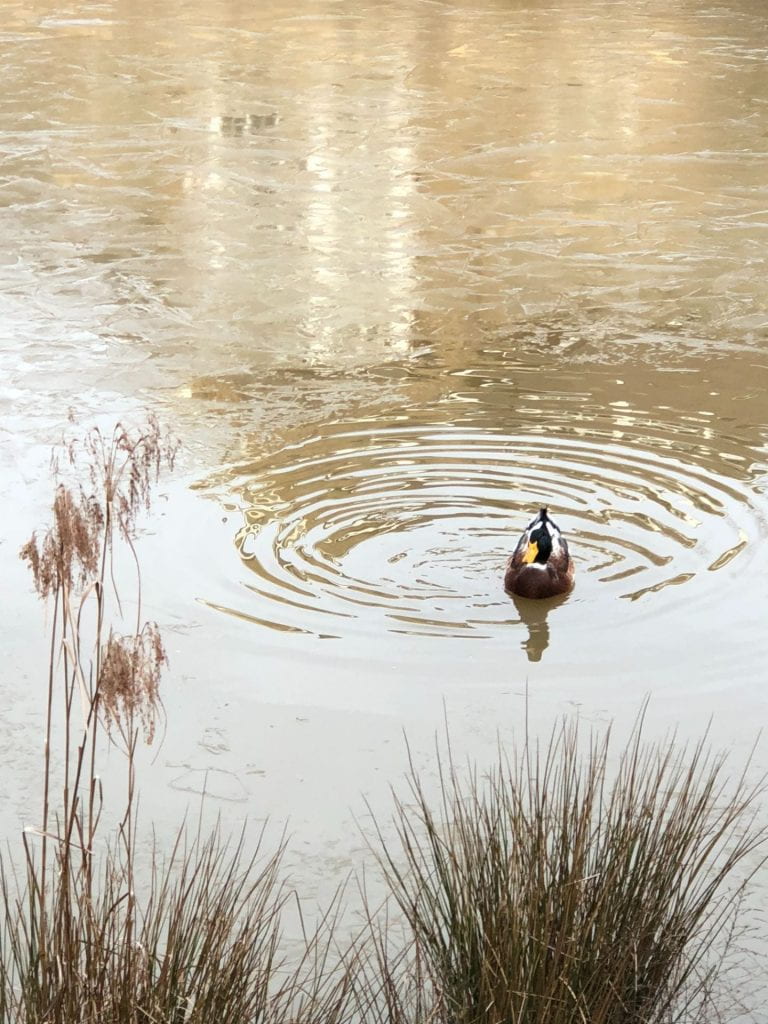
Part of the water is frozen. Why is the ice there? Why isn’t all the water covered with ice?
There are circles around Percy. What is making the circles? Why do the circles grow larger?
Most of the photo is brown. Why aren’t the plants green and the water blue?
Percy’s head is turned. Is Percy looking at something?
Percy is colorful. Is he a boy or a girl?
Percy is in cold water. Does it hurt him?
